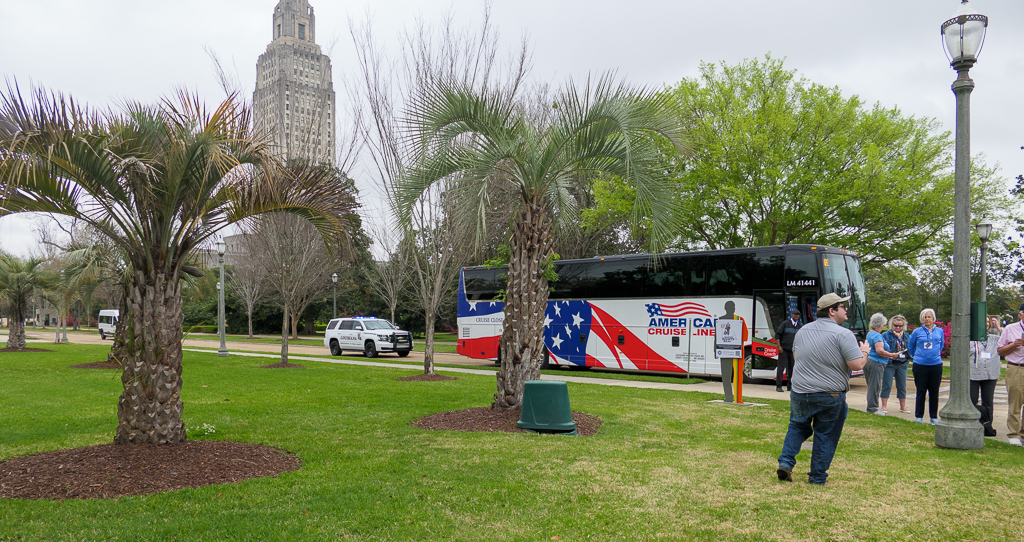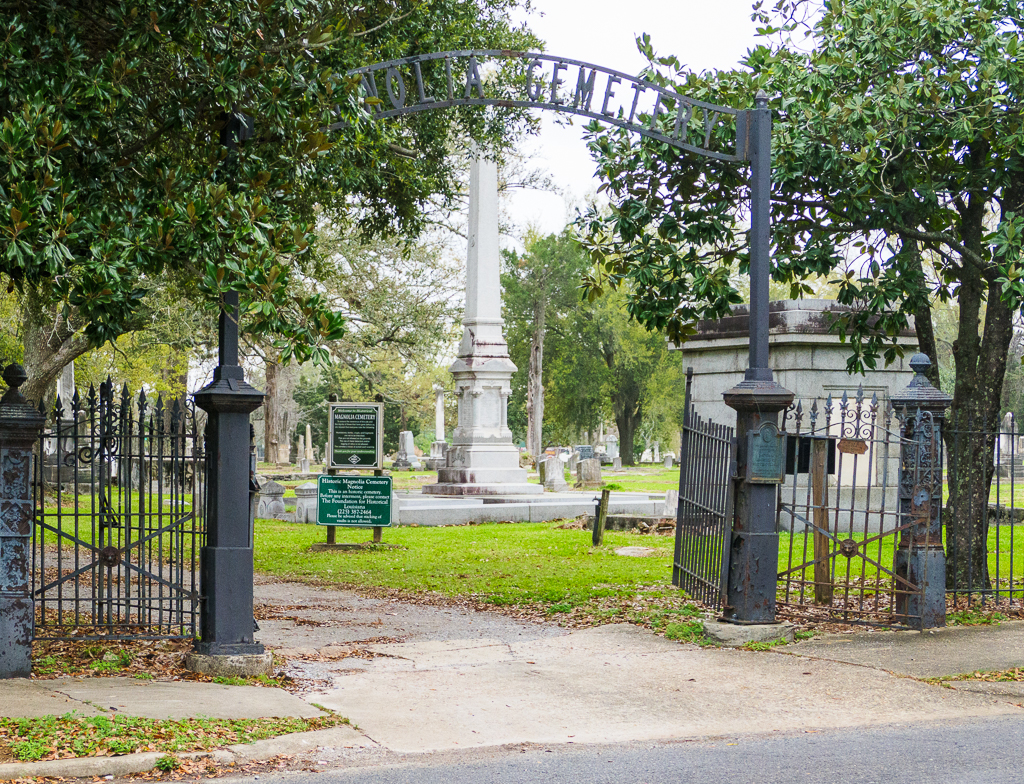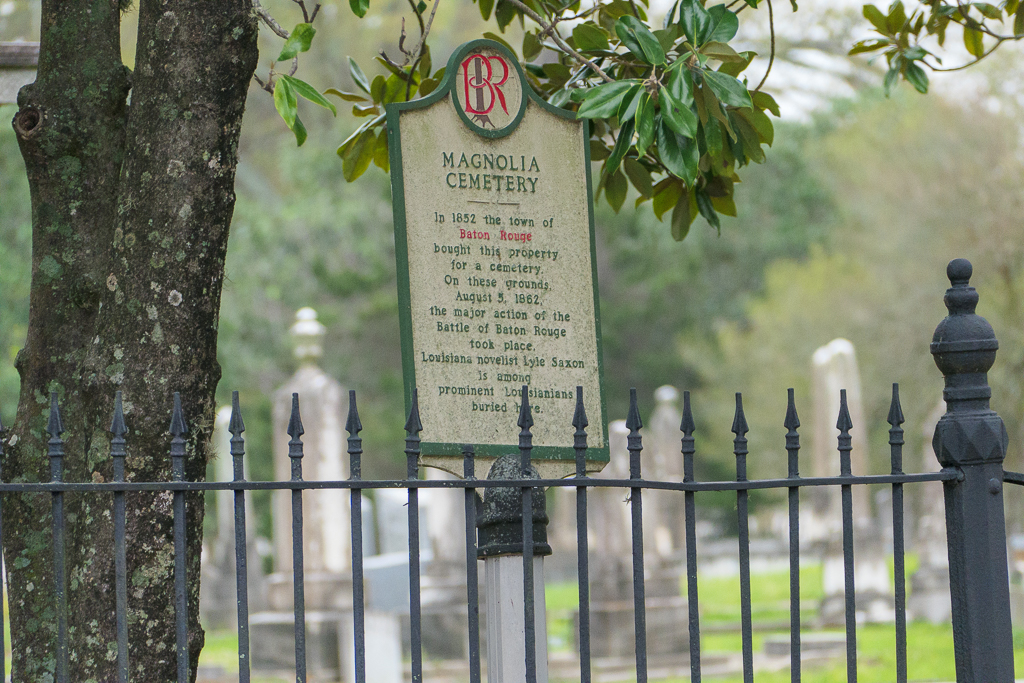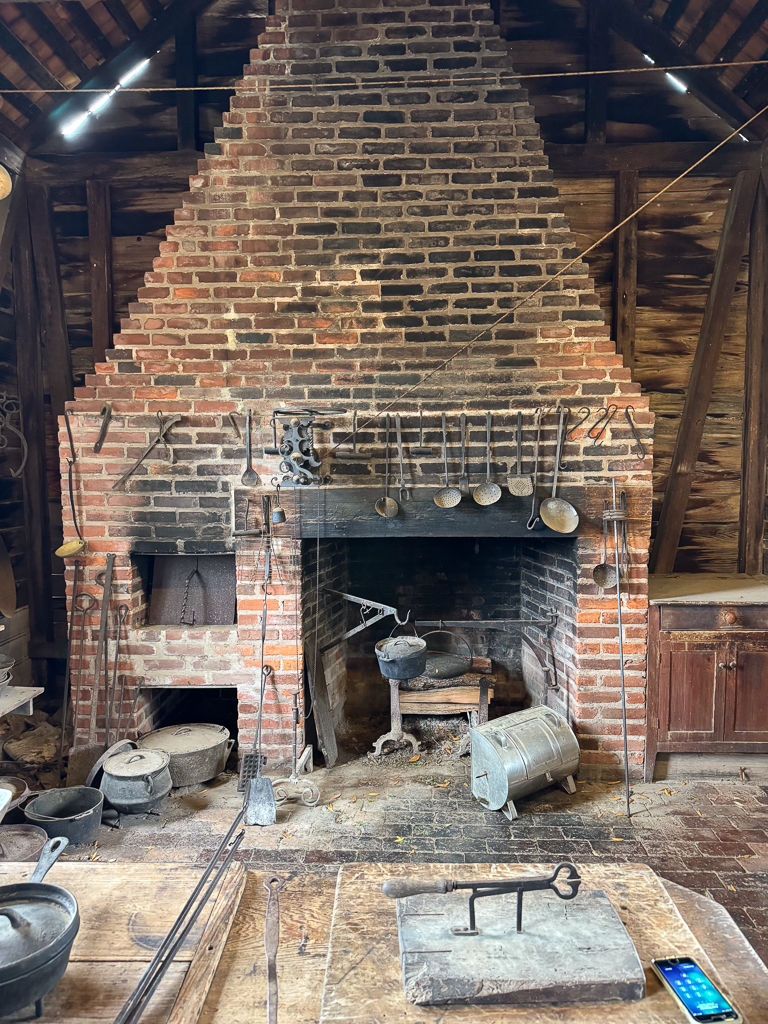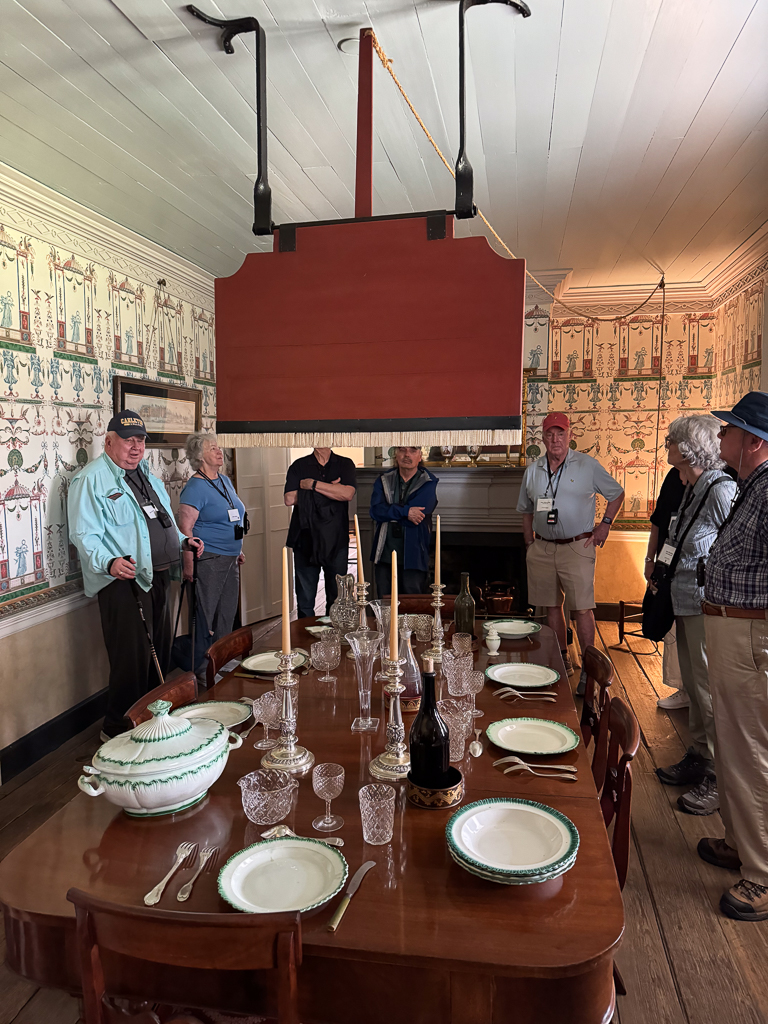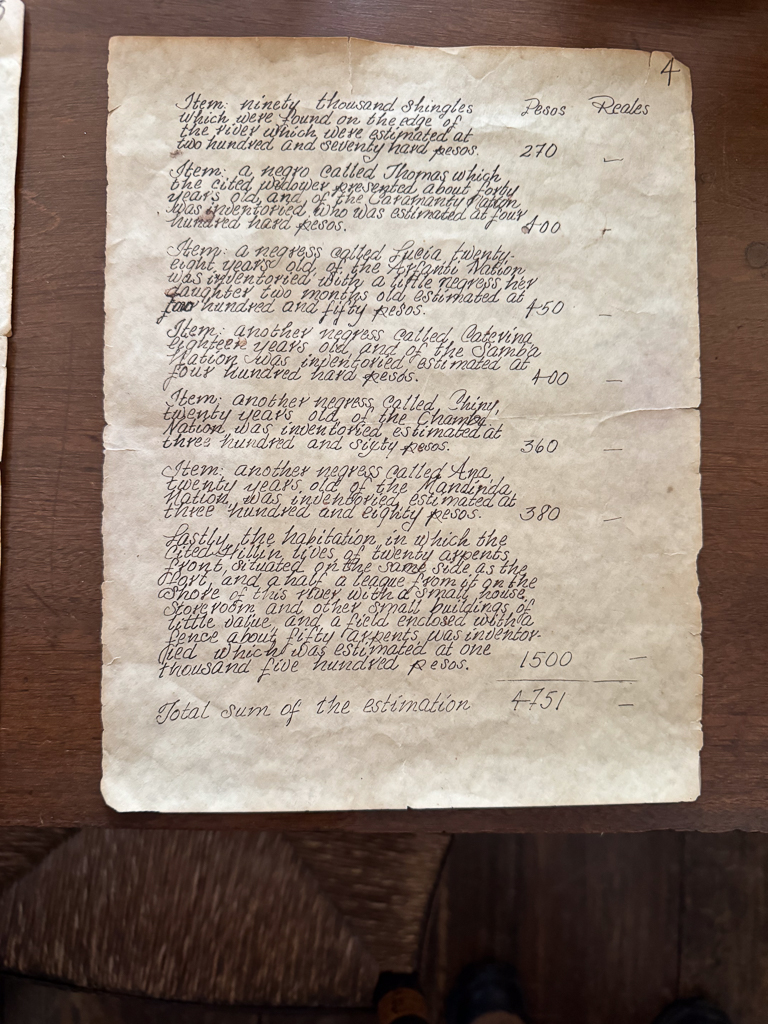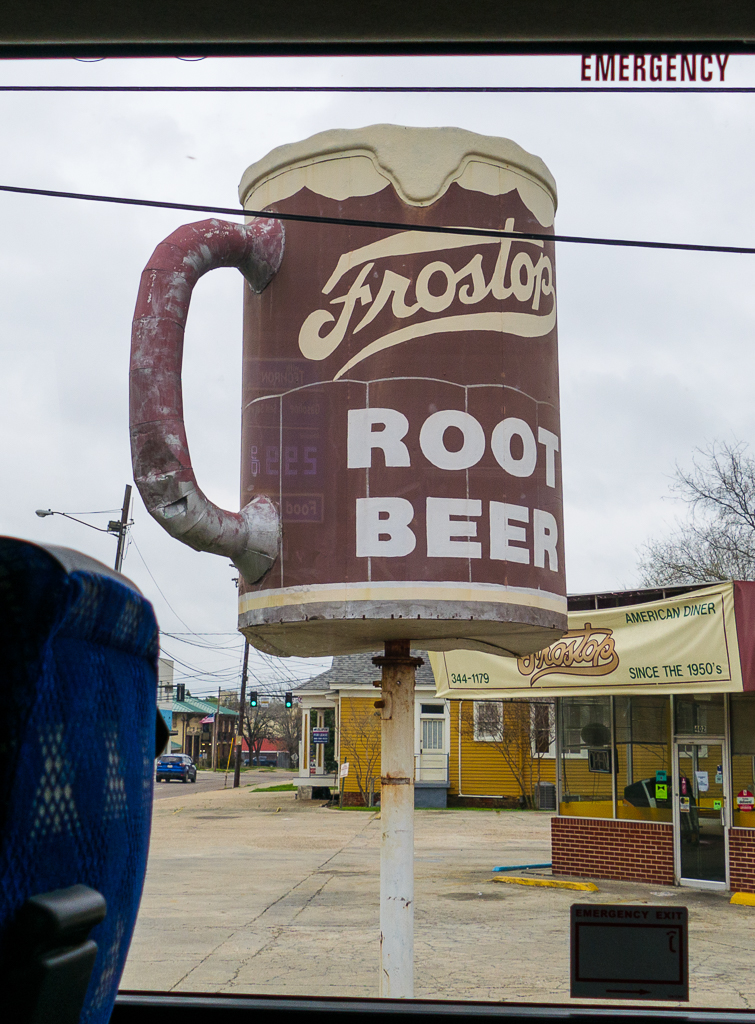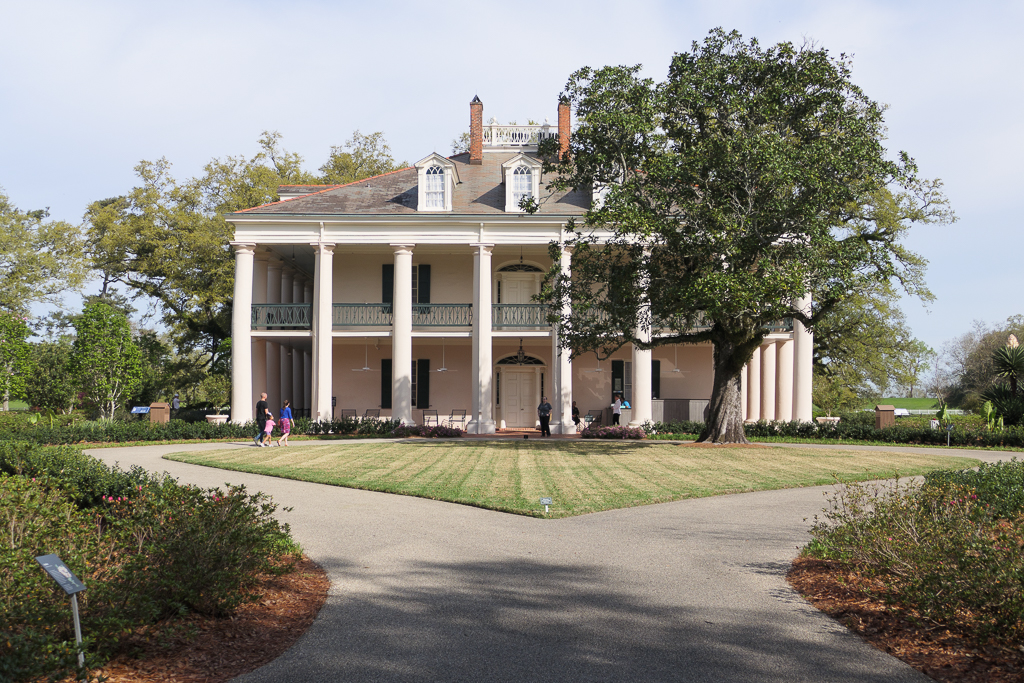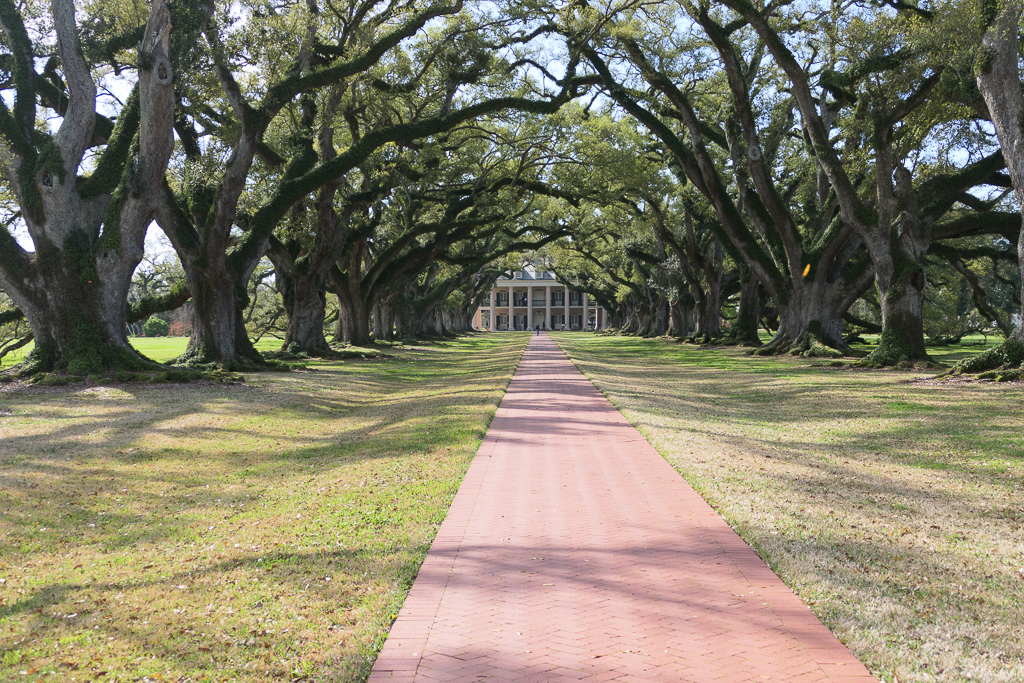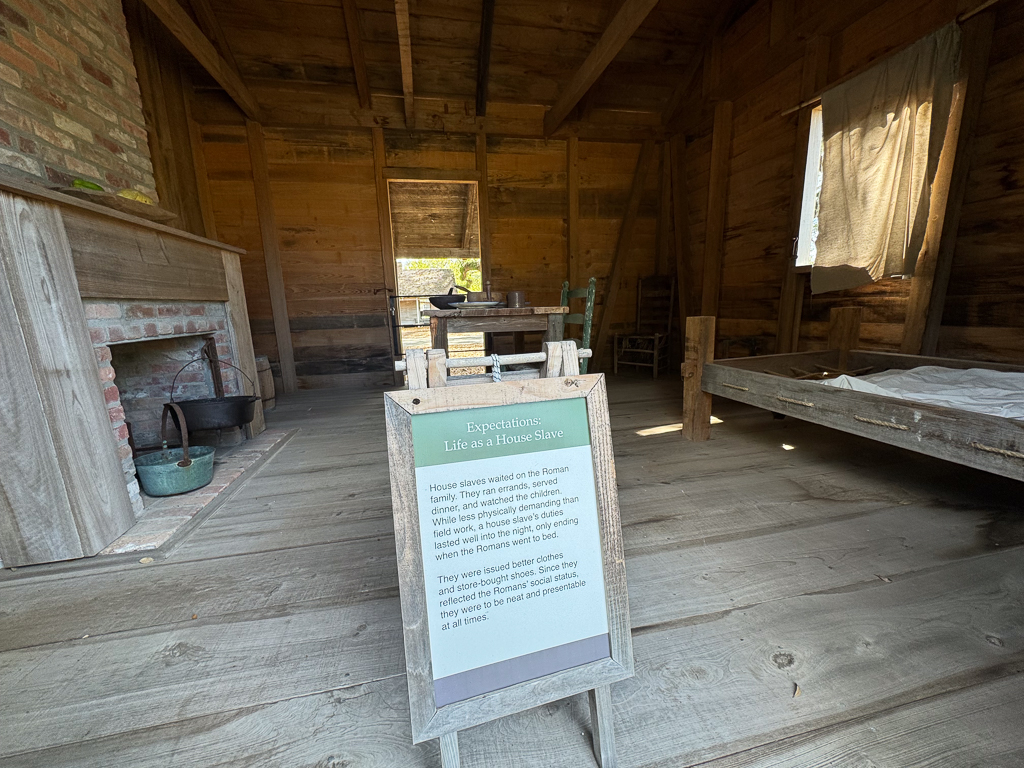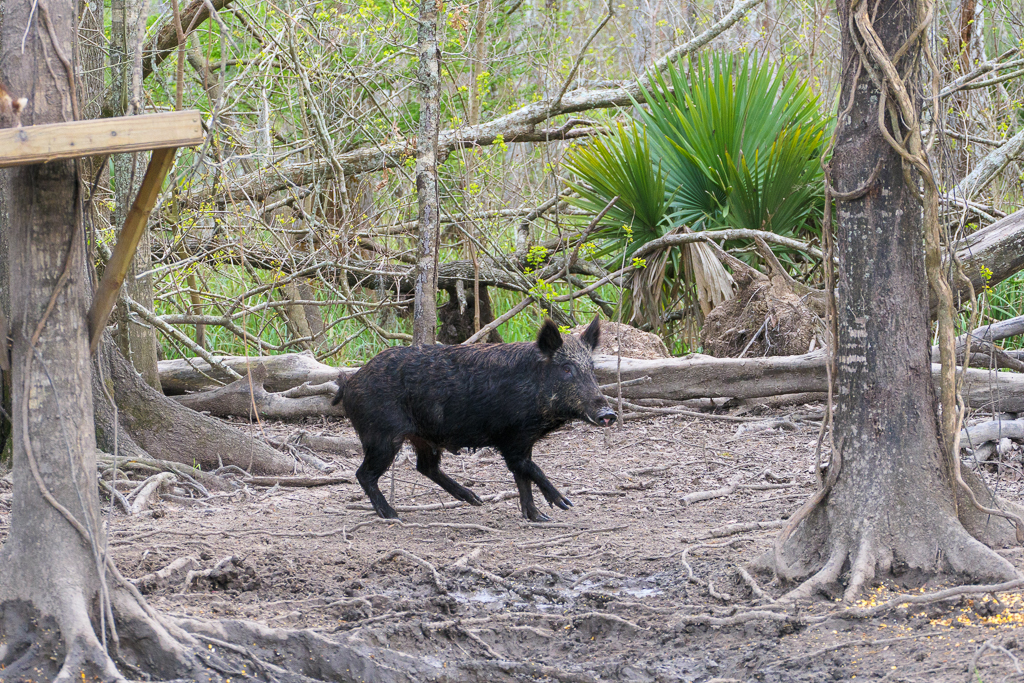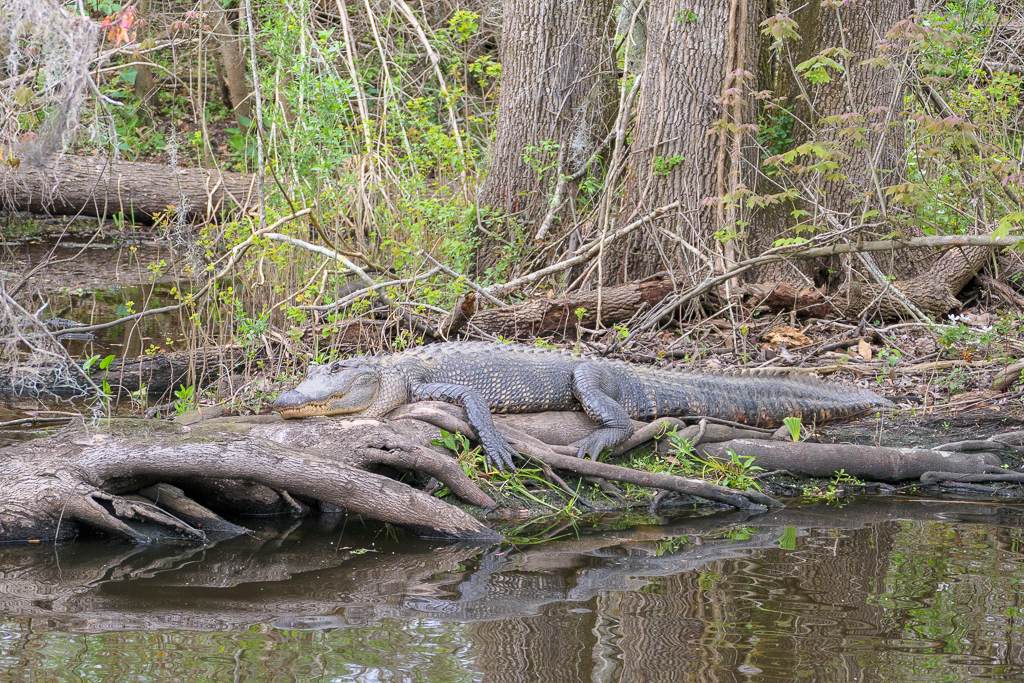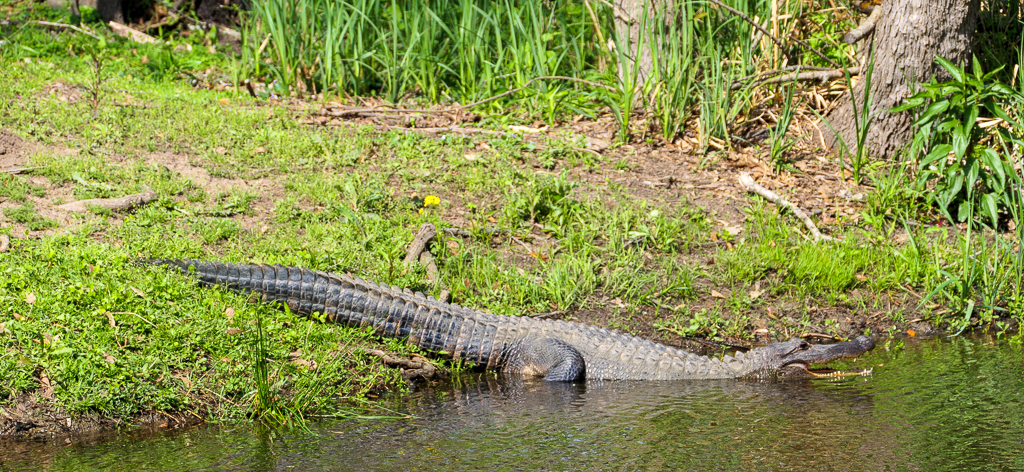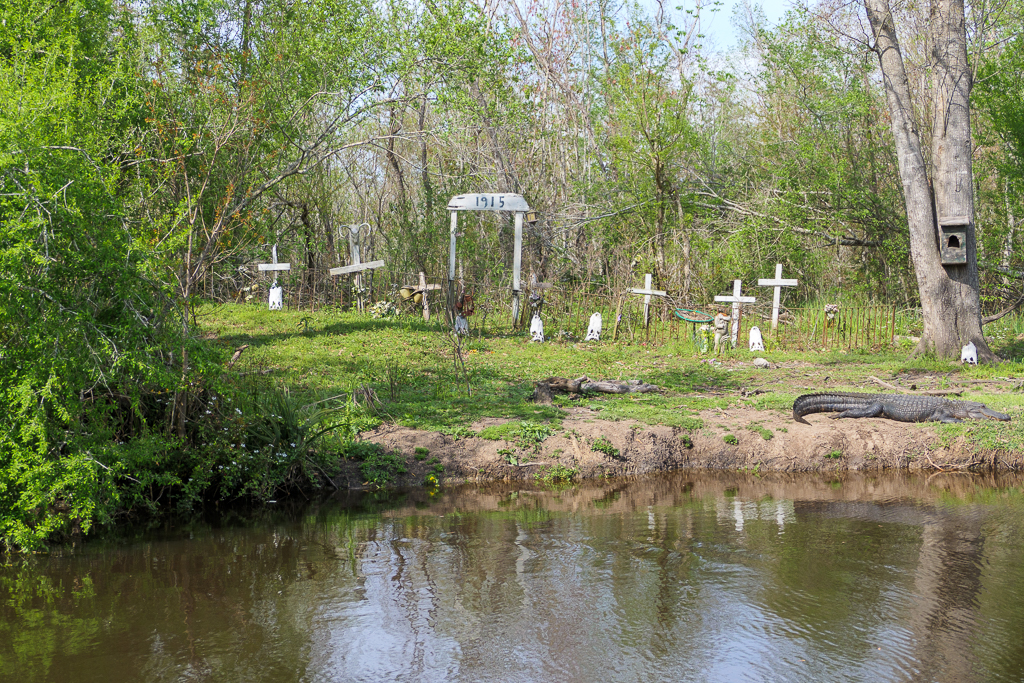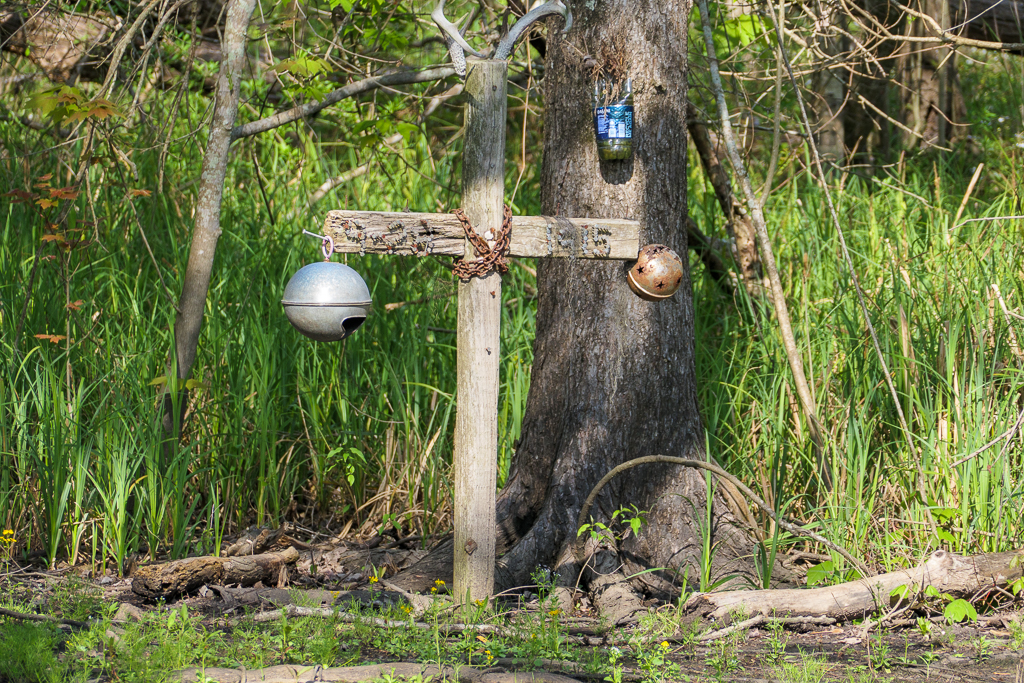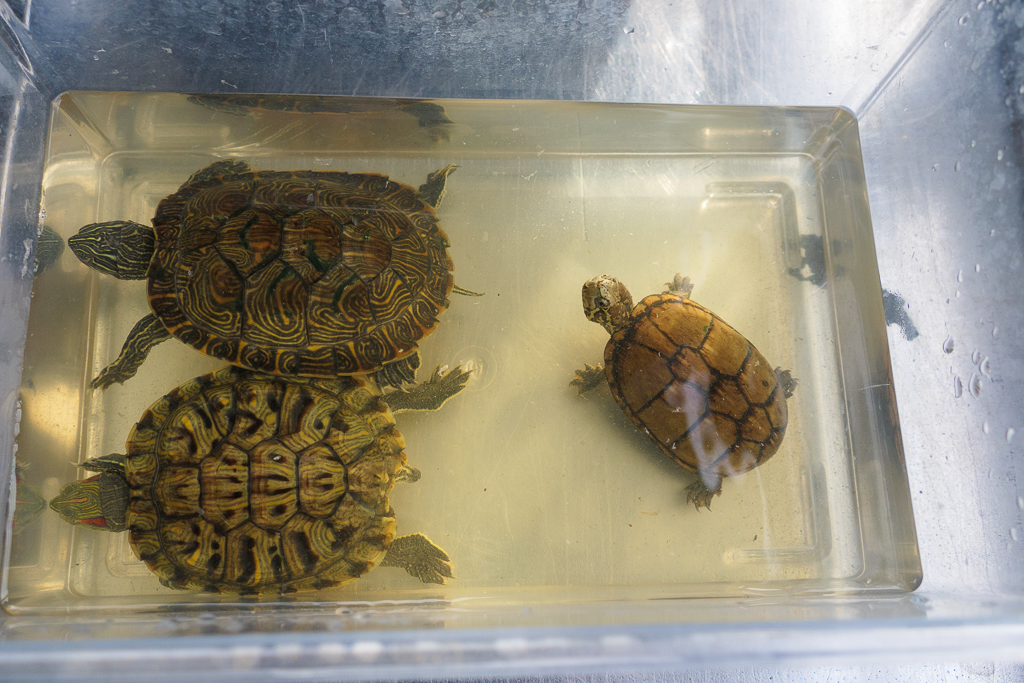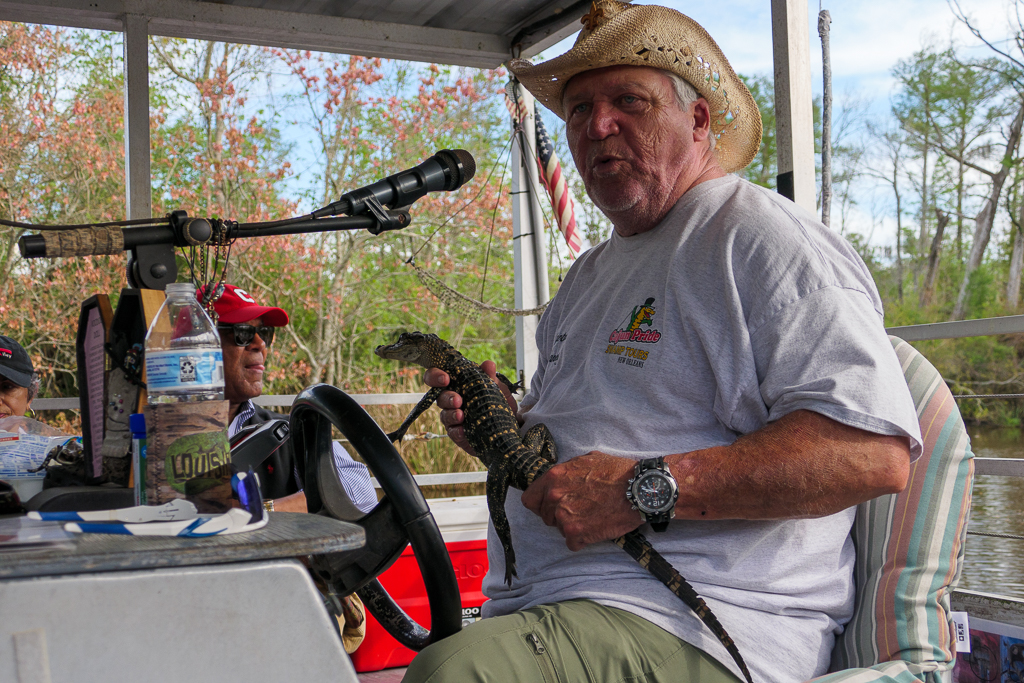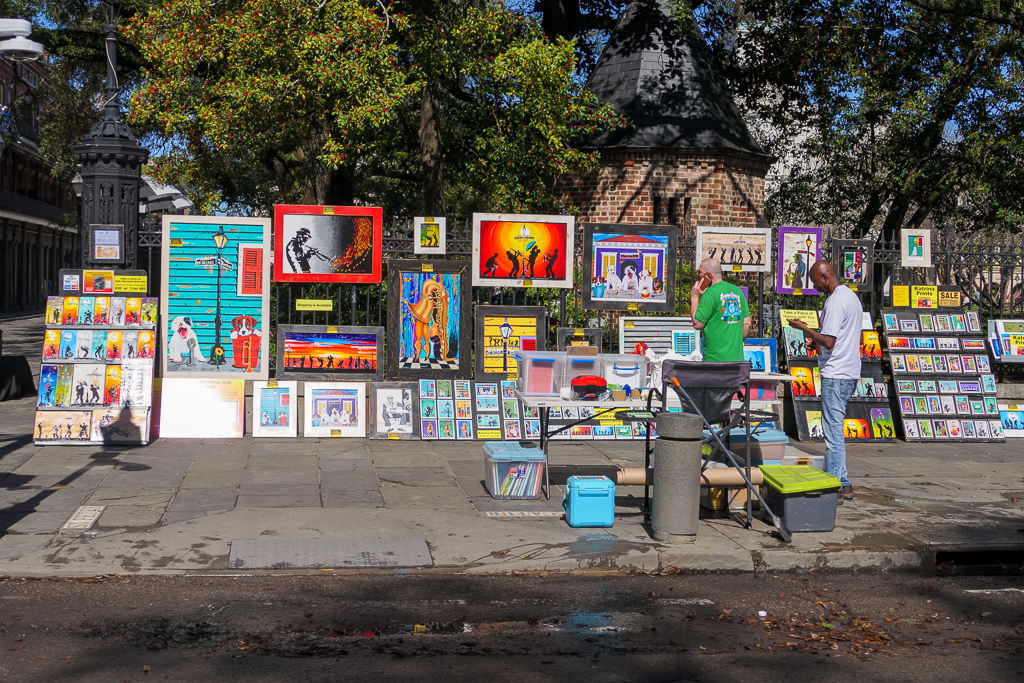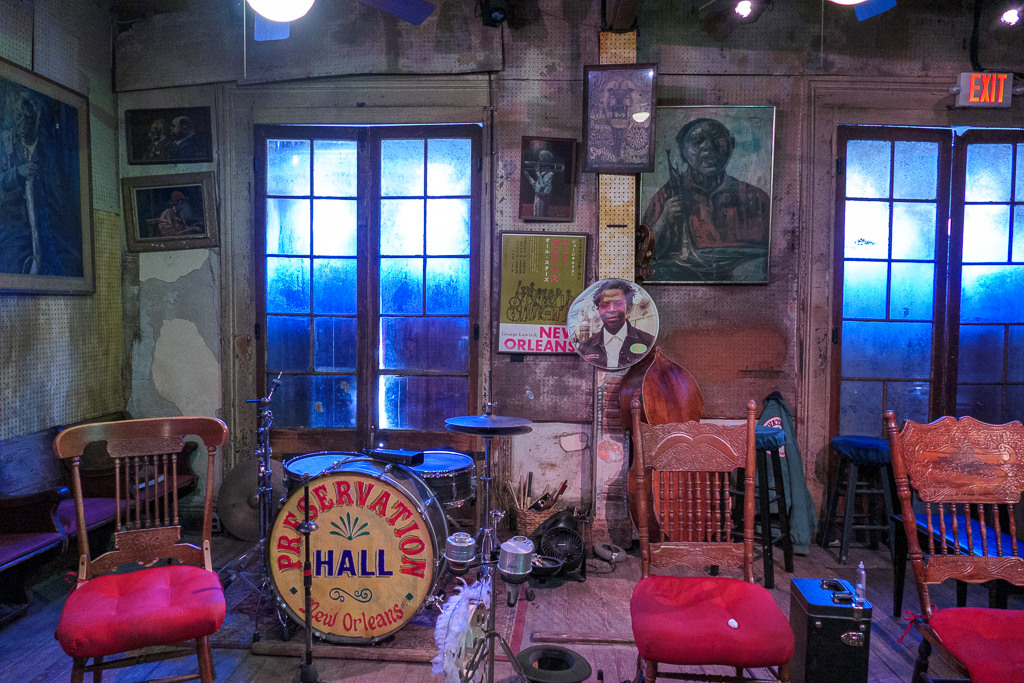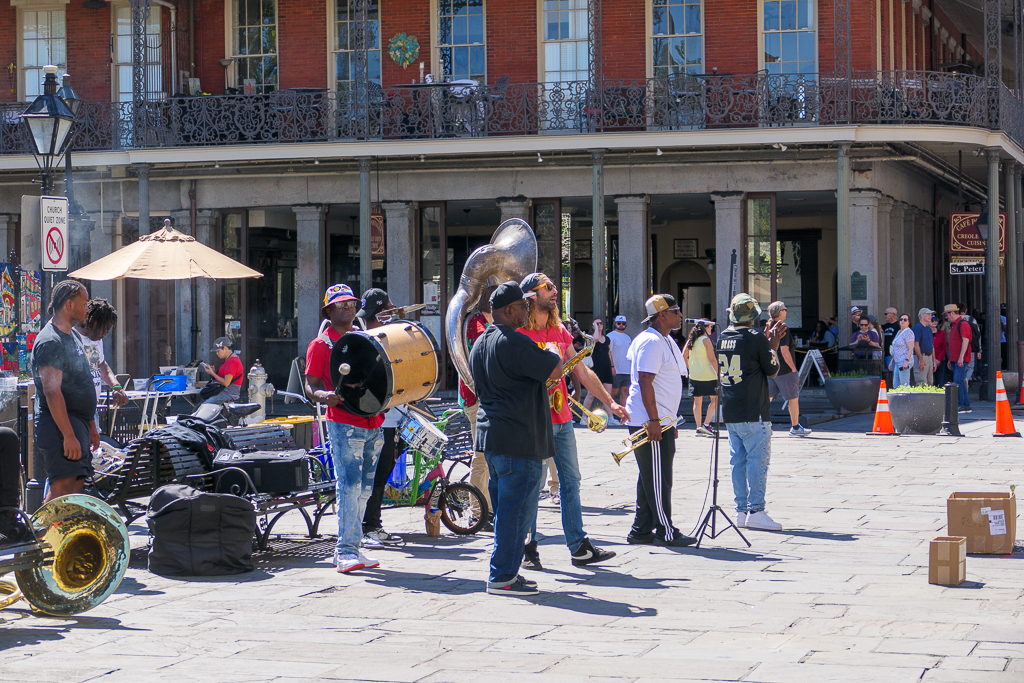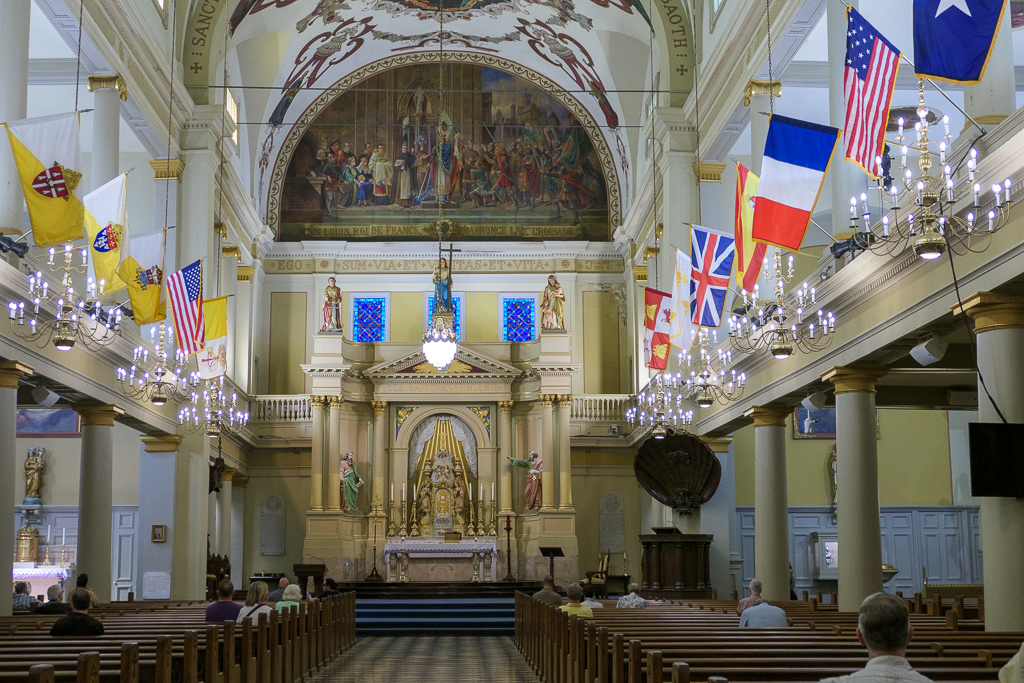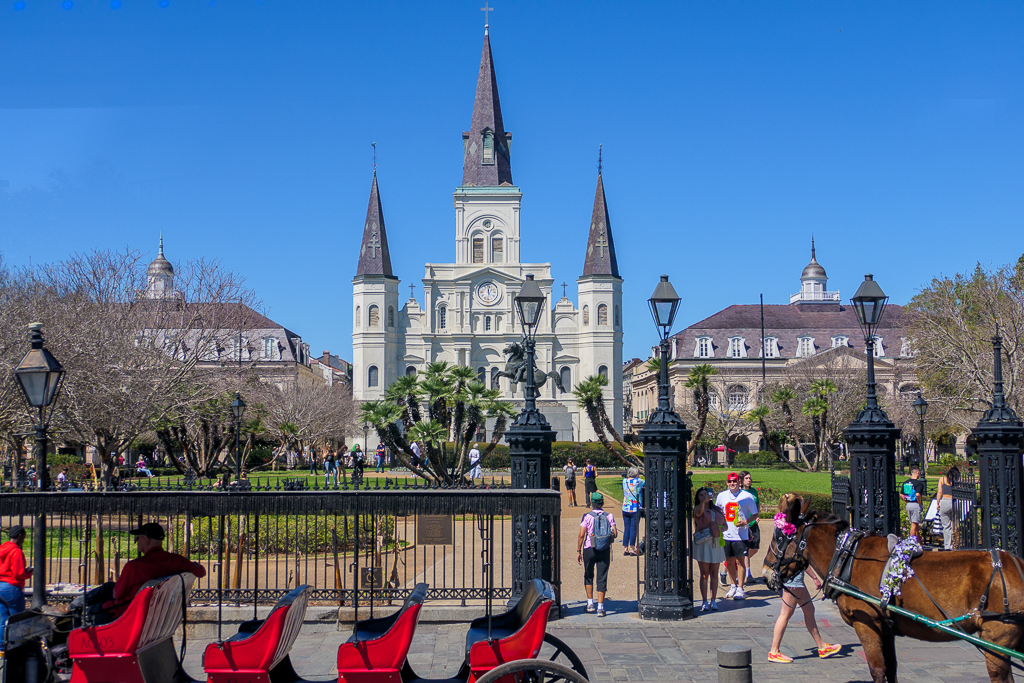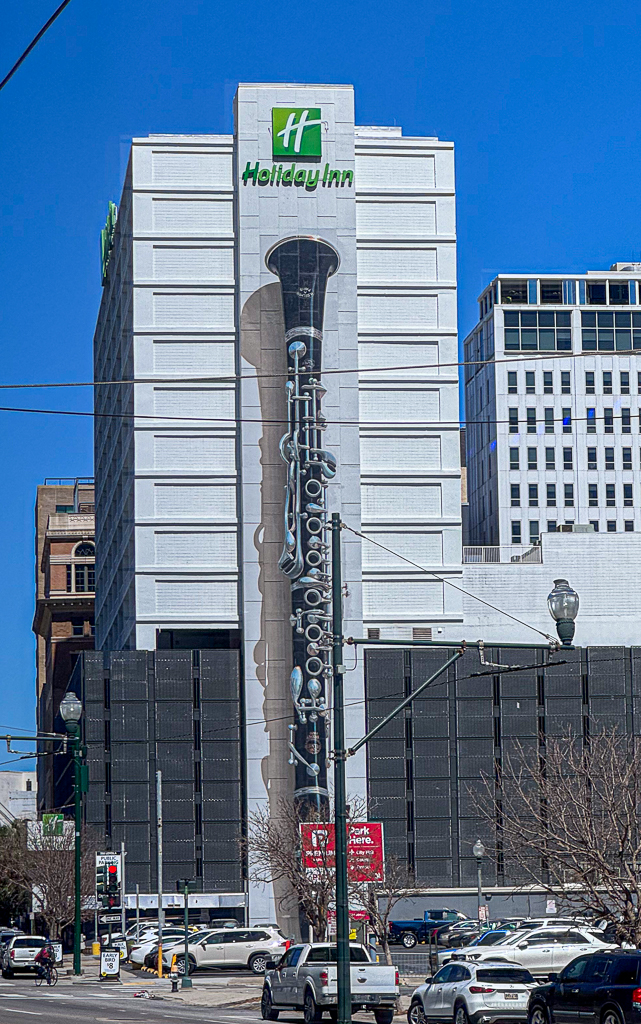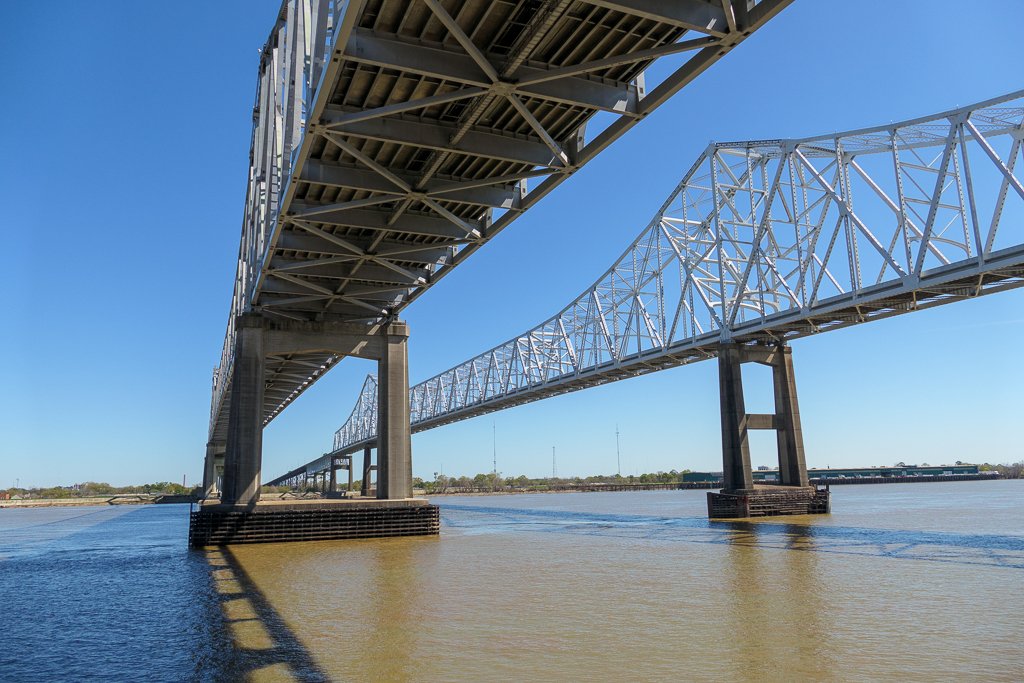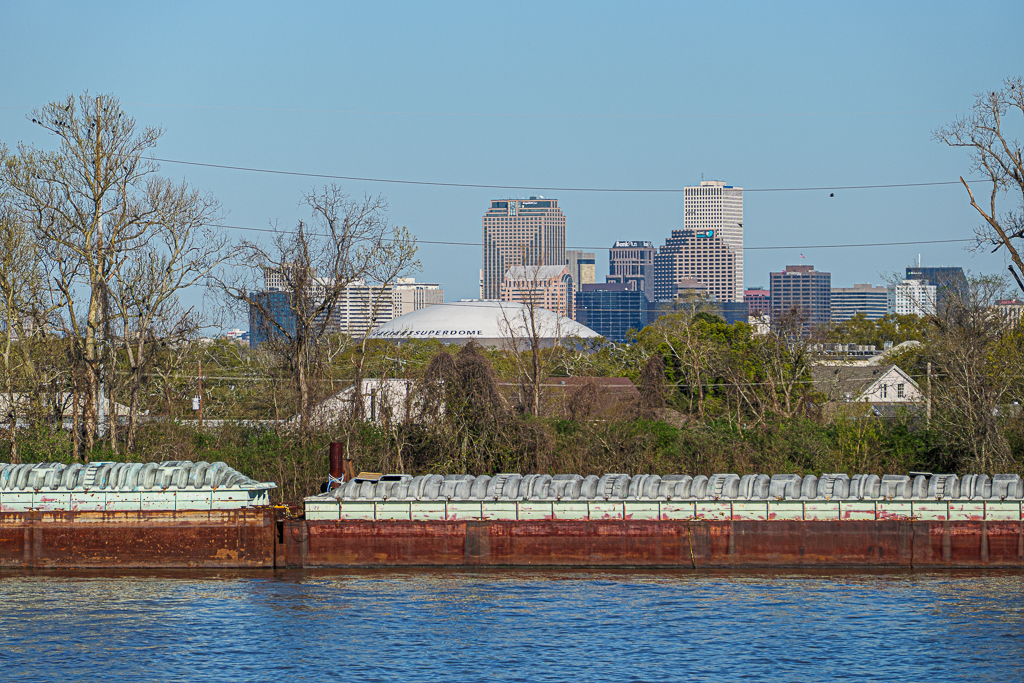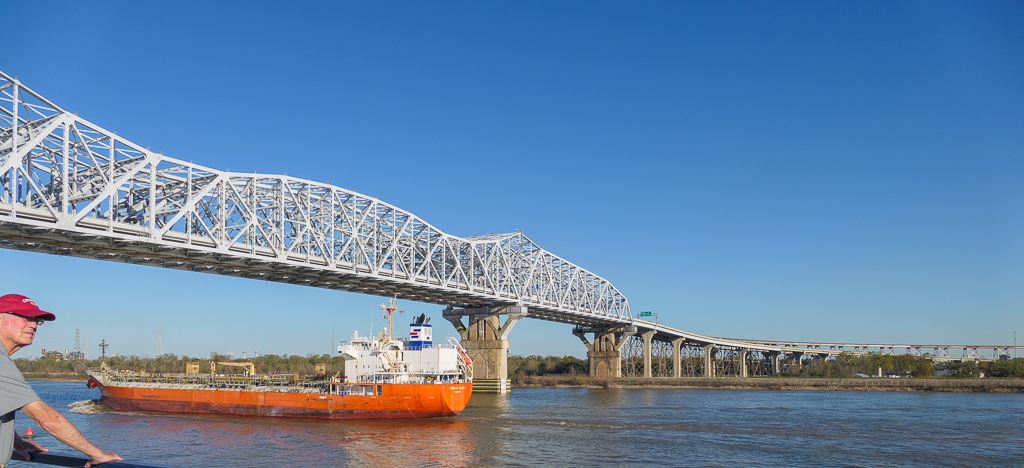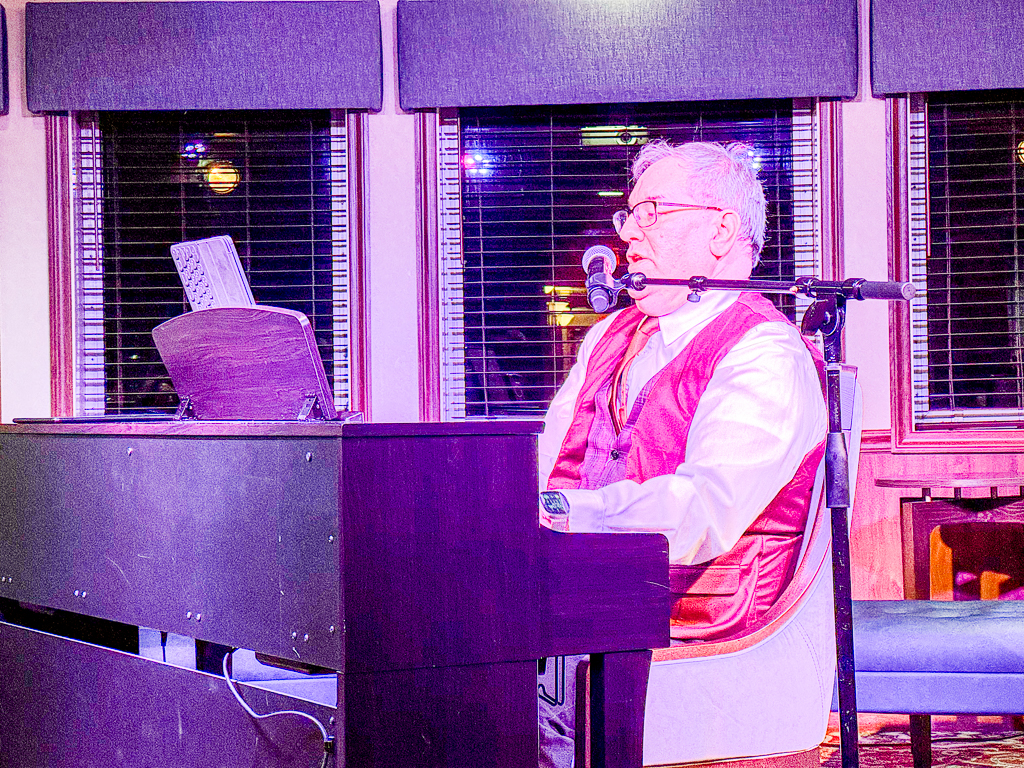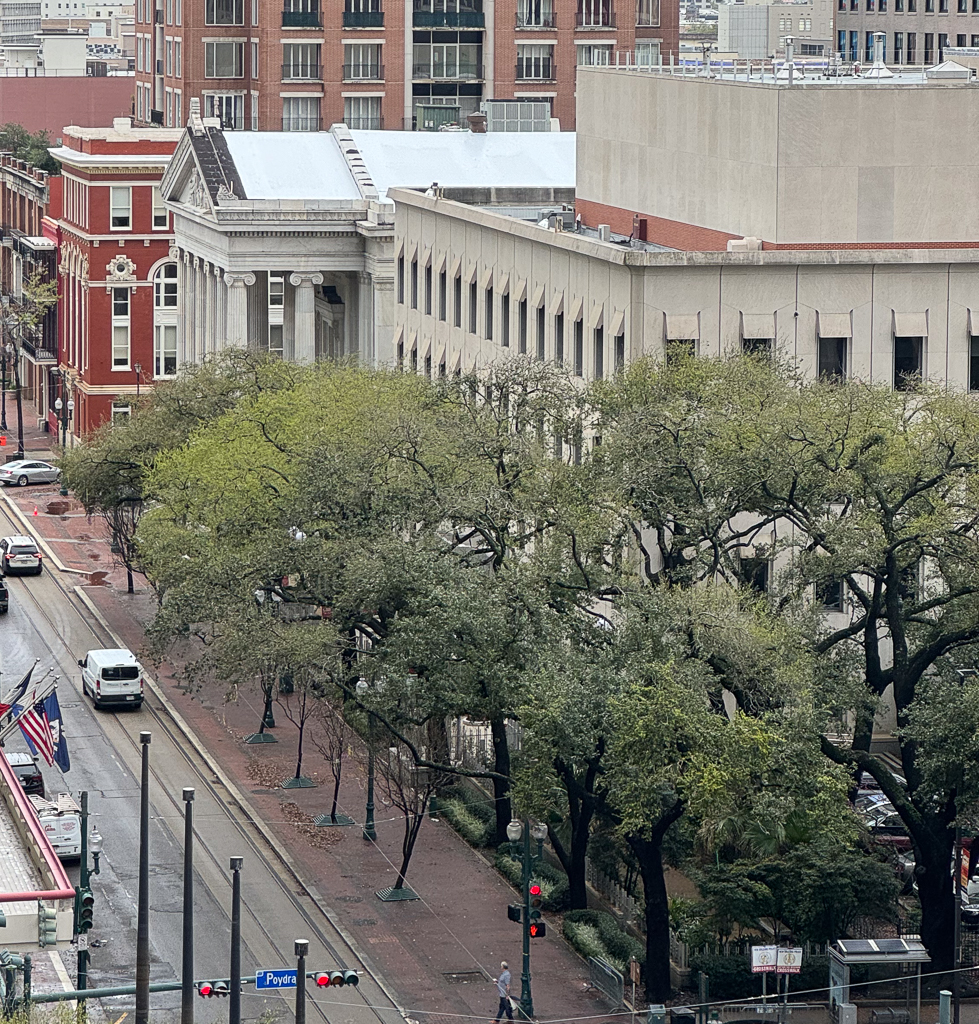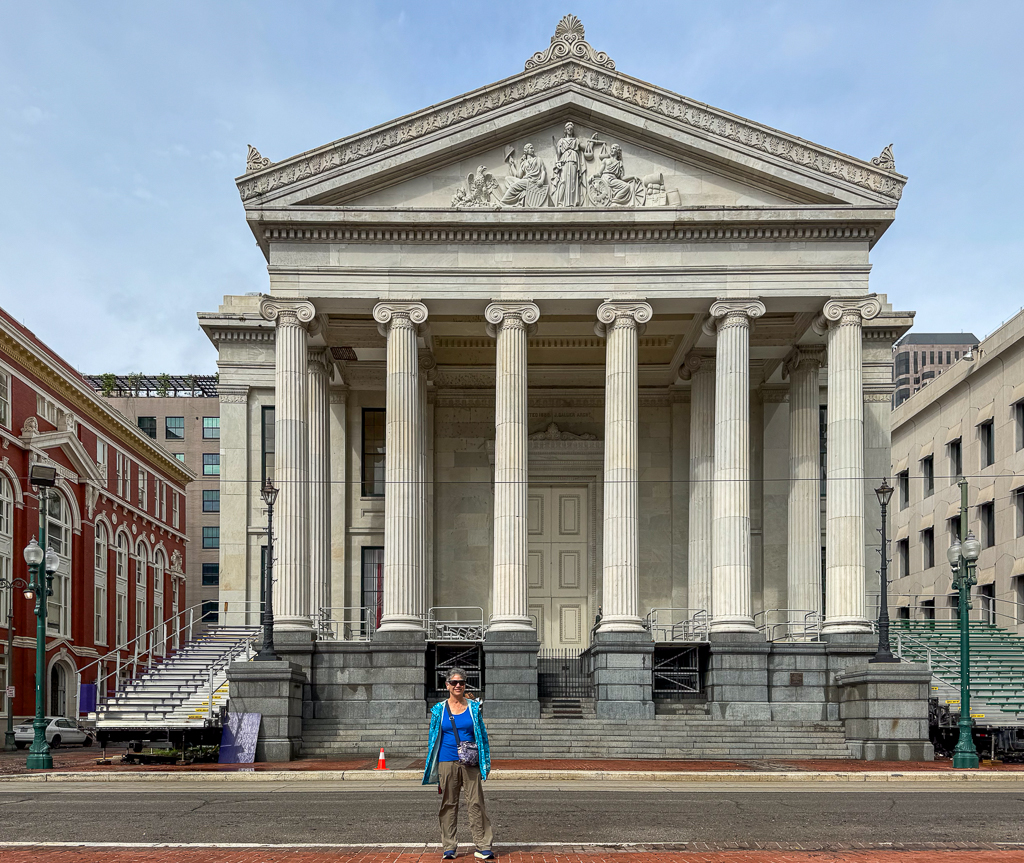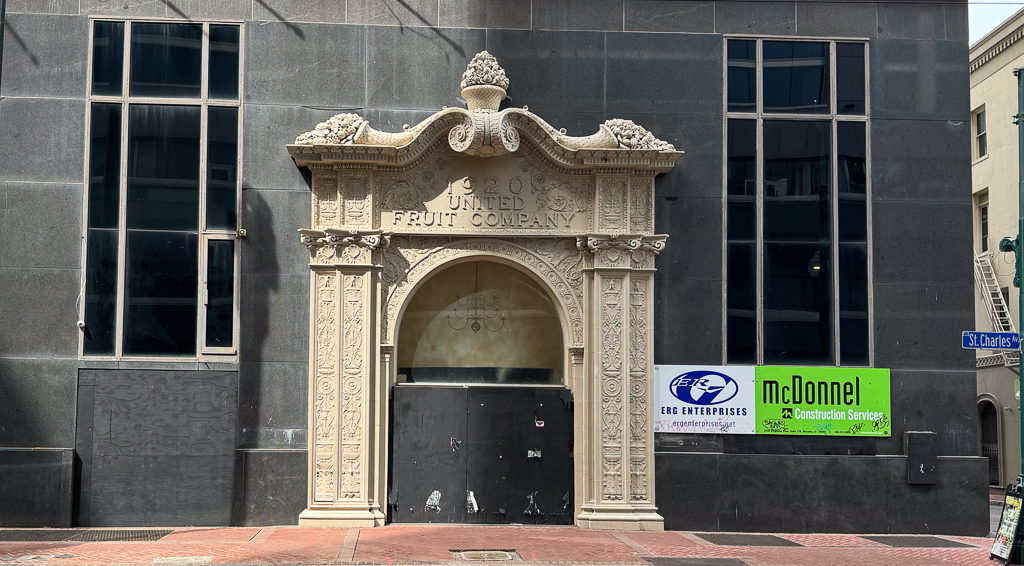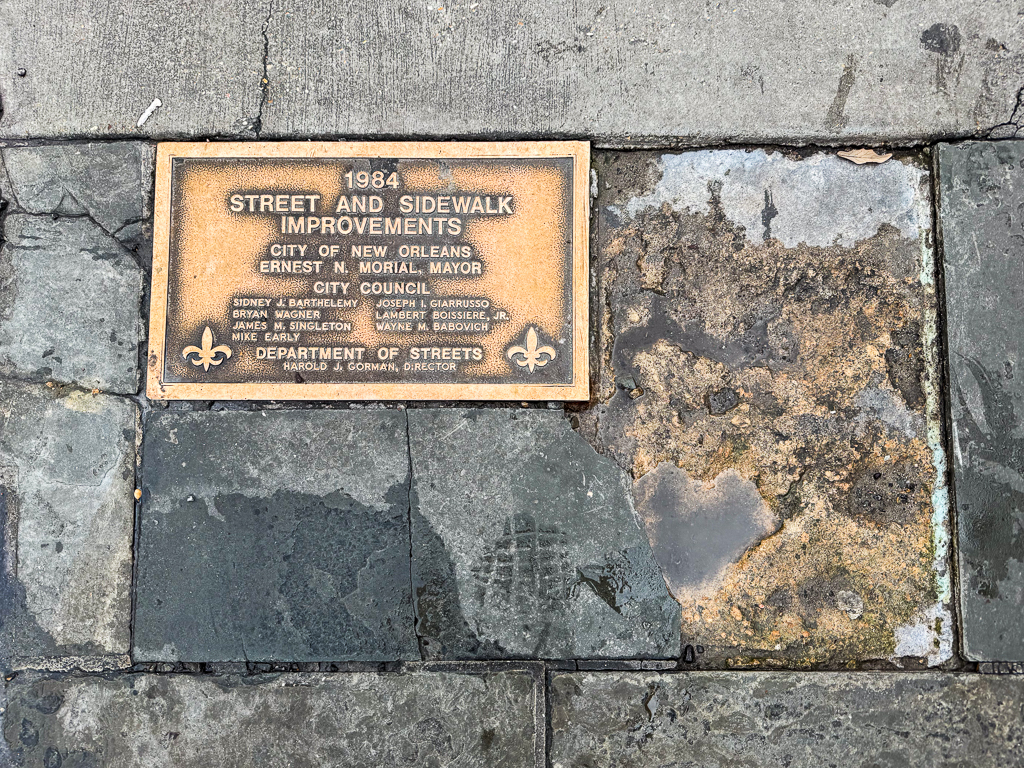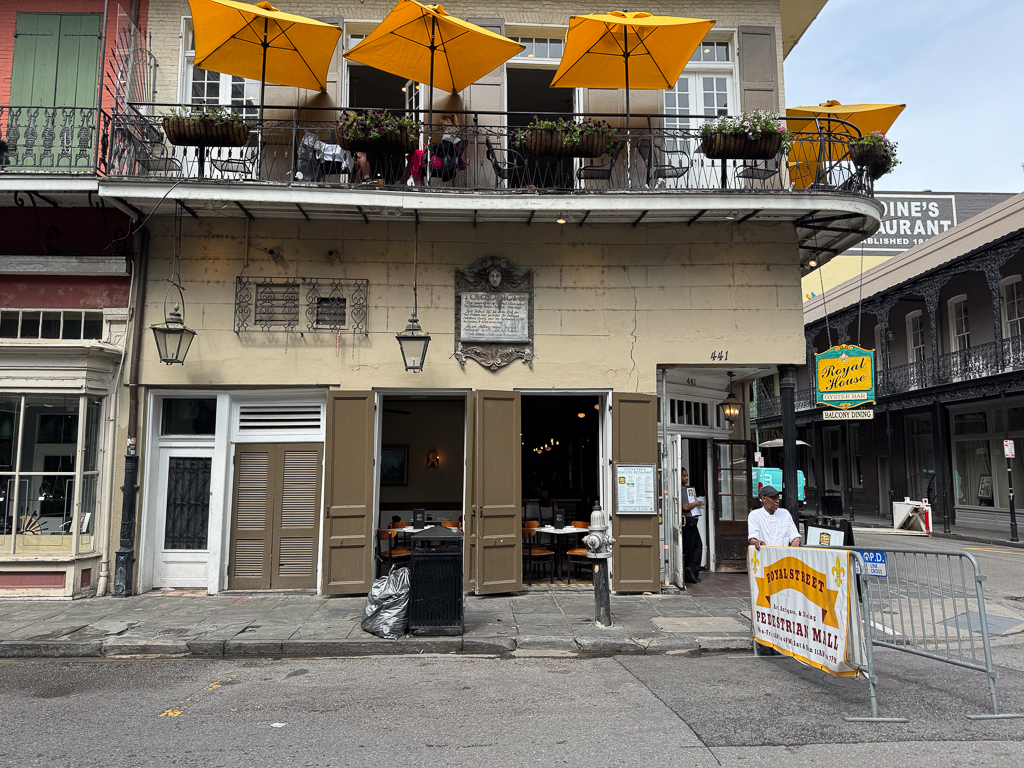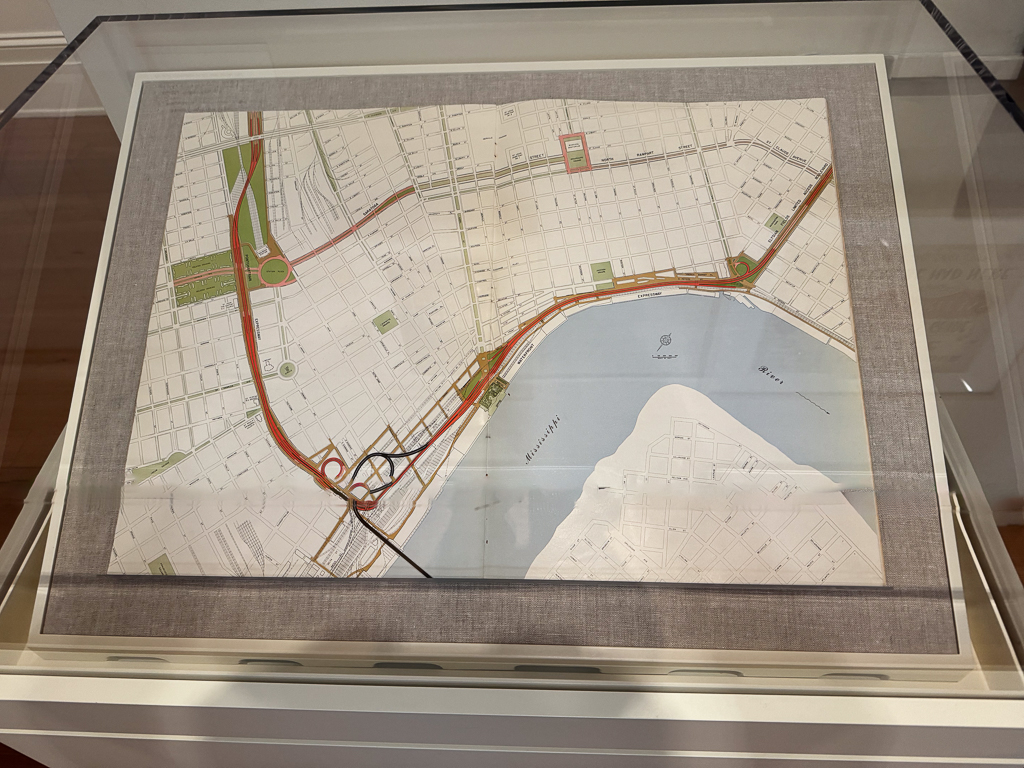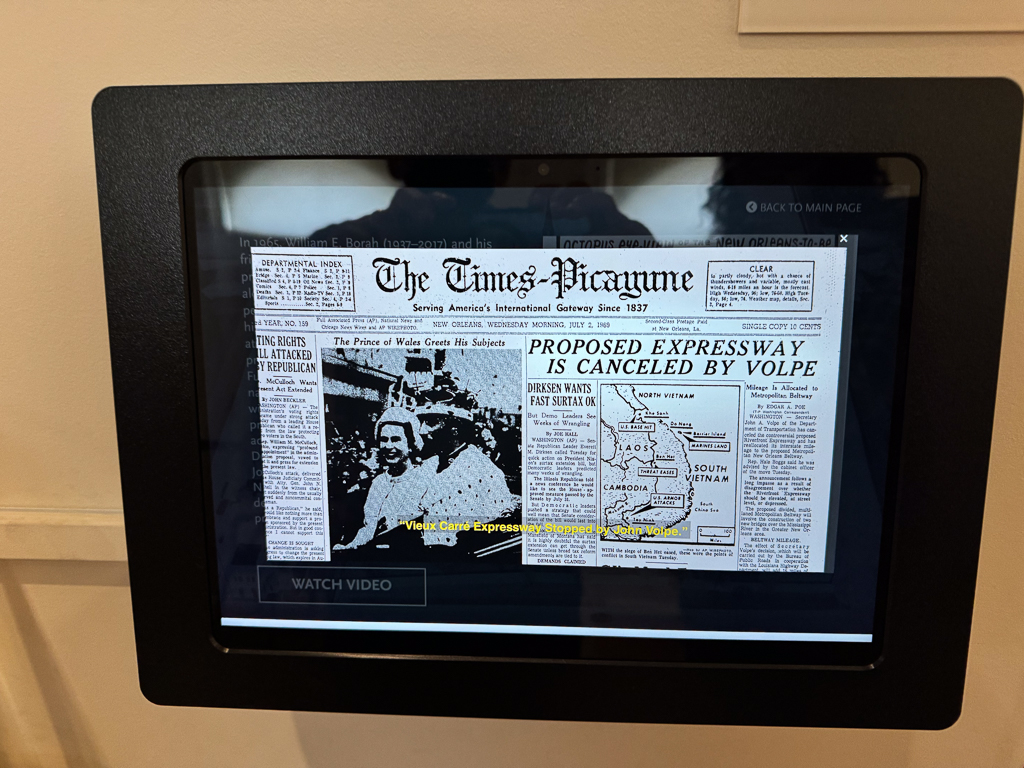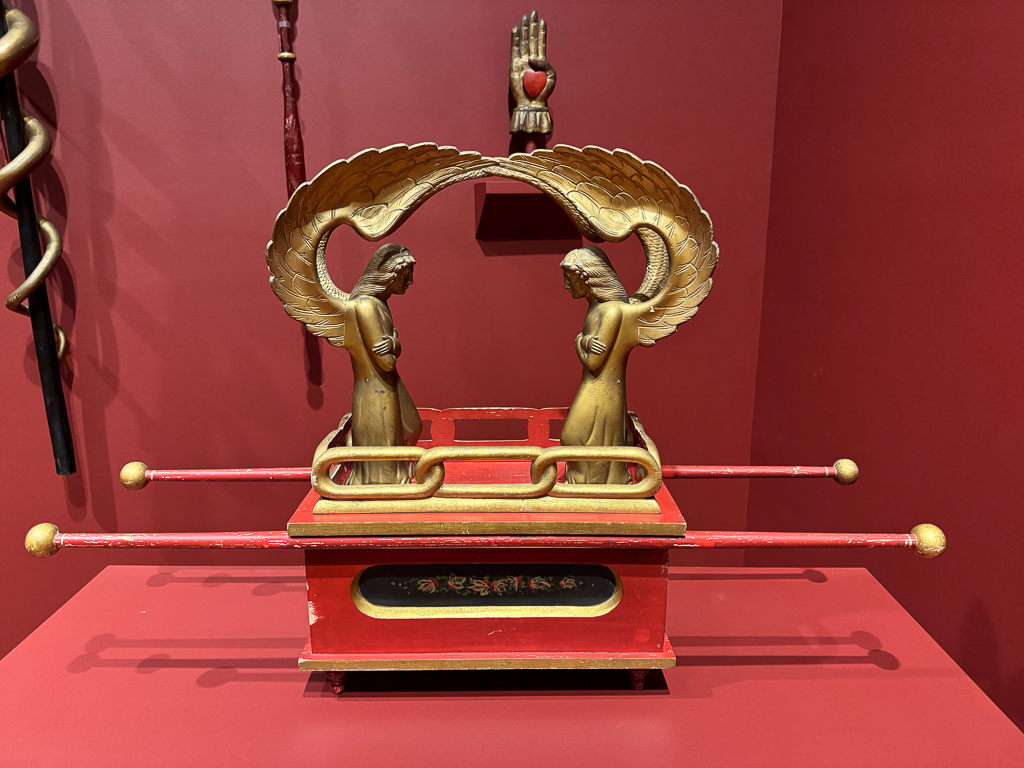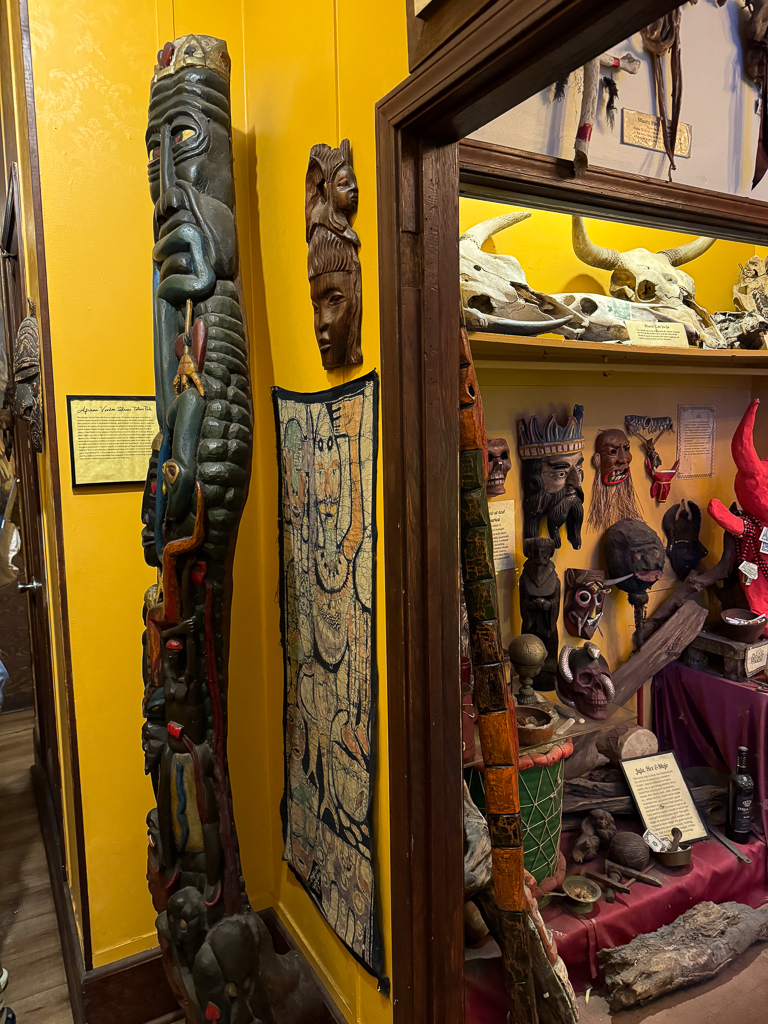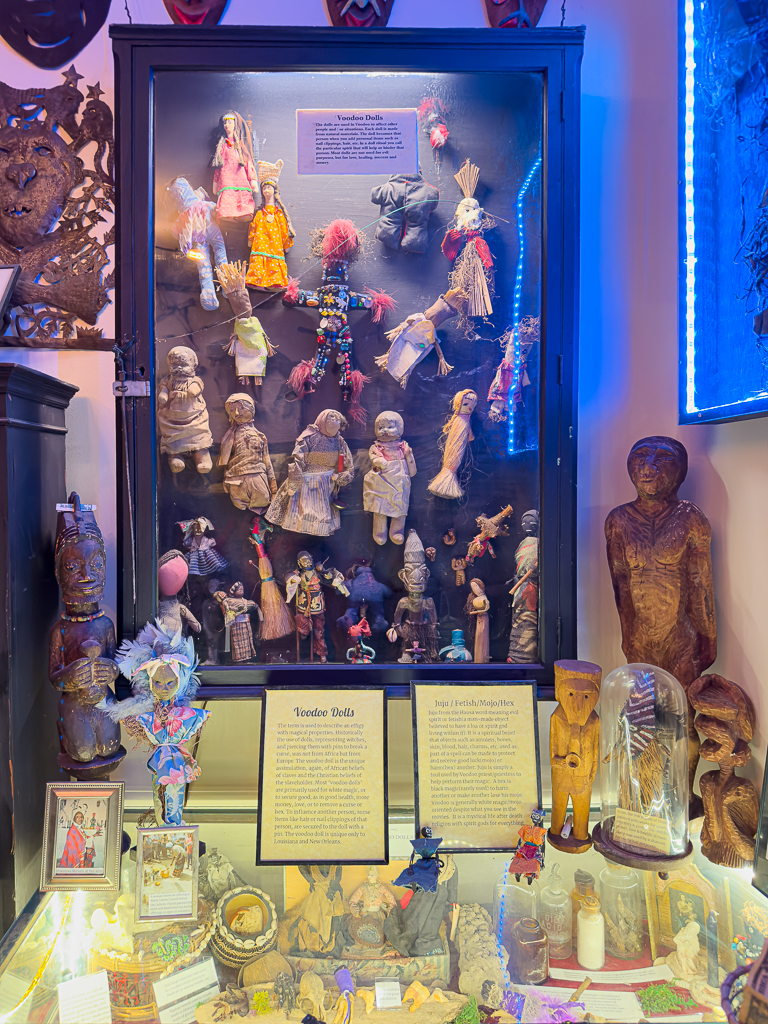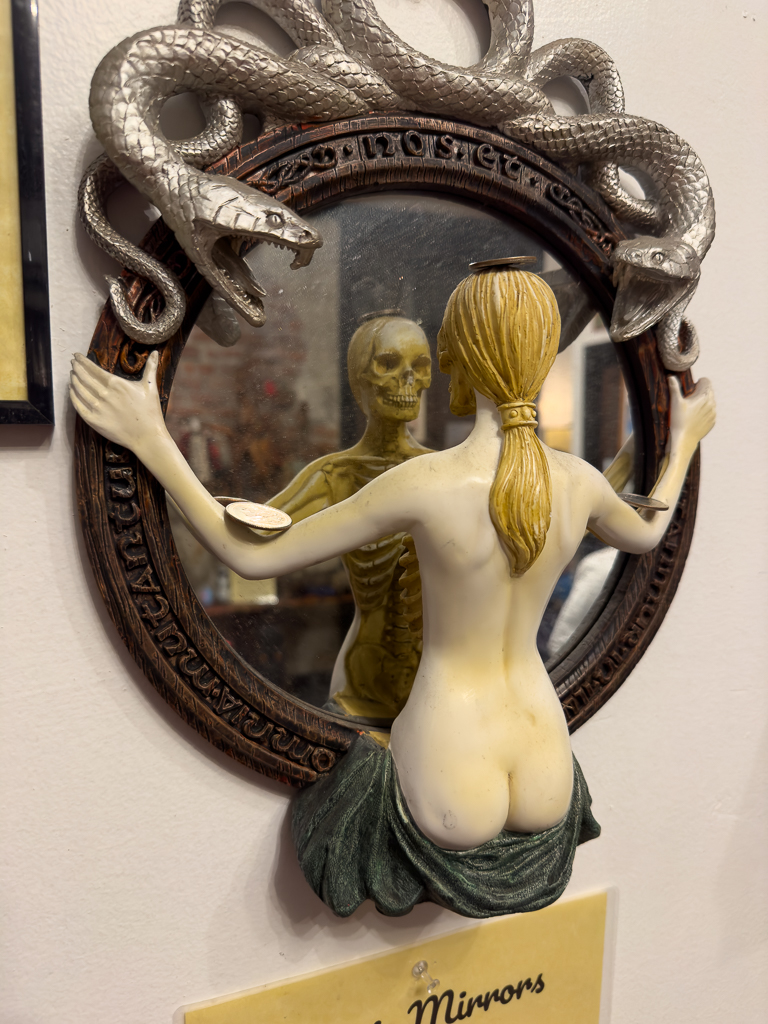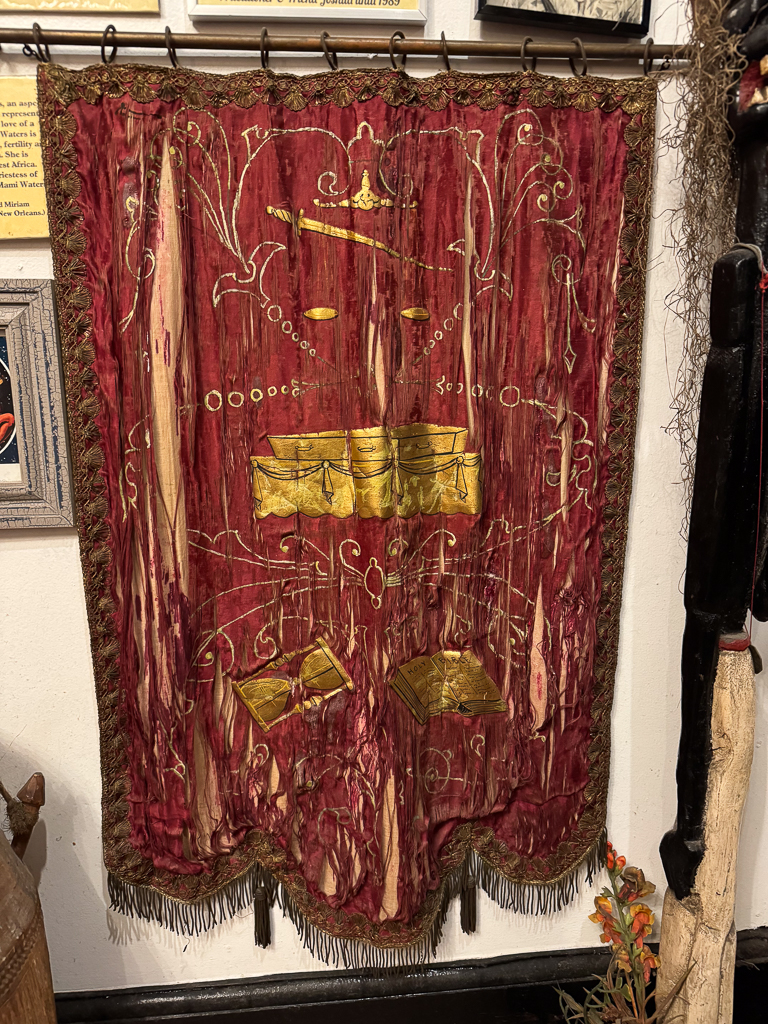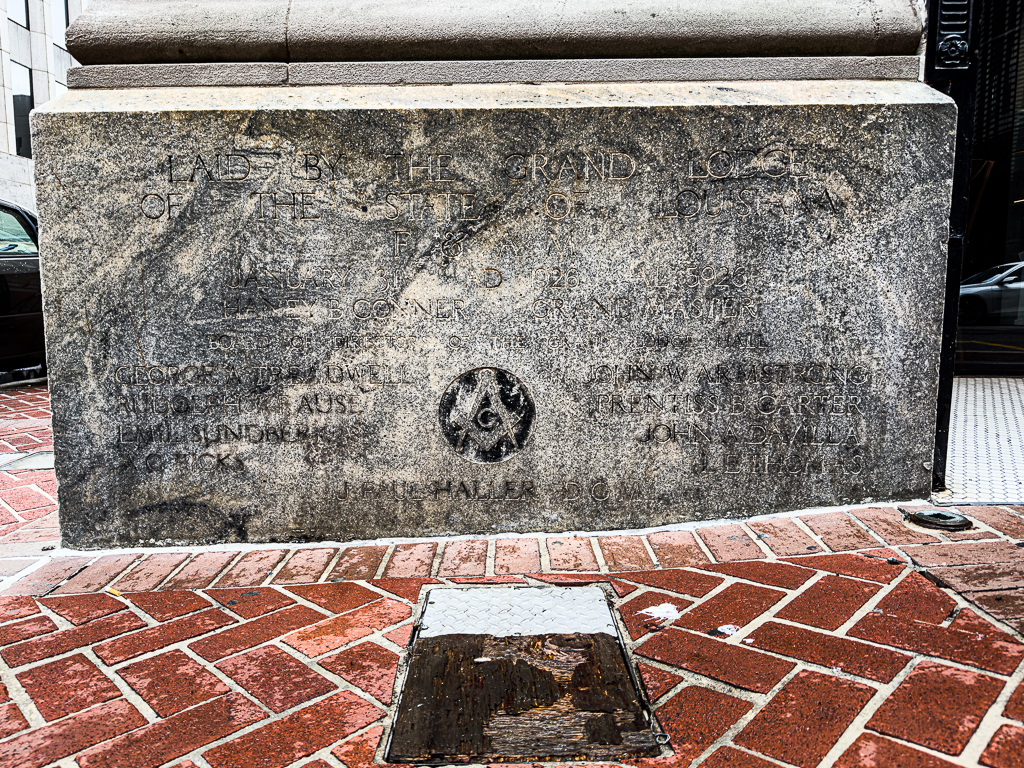This afternoon, we took a Baton Rouge walking tour. The weather was very threatening, so only fifteen of us started the tour.
Our guide told us that the Mississippi was very low; it would normally cover the brown areas on the banks, but it hadn’t been that high for months.
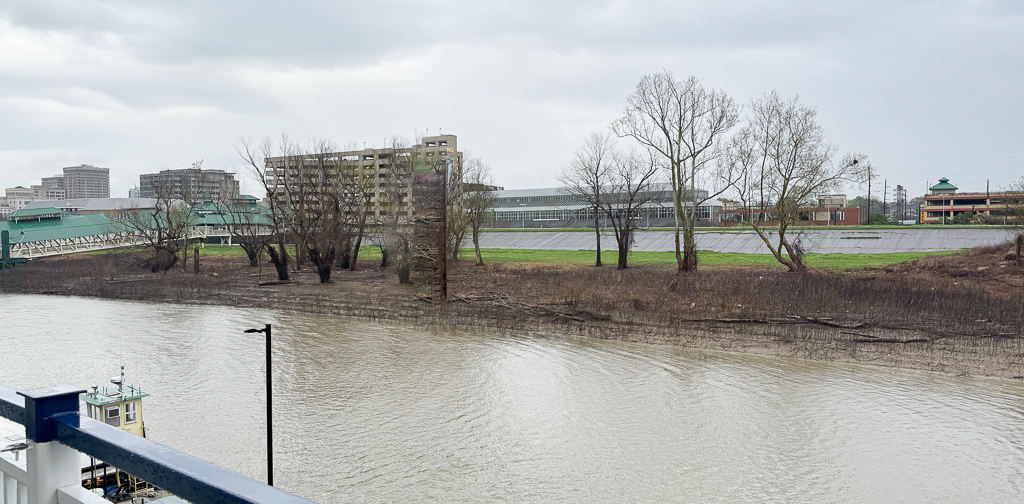
Baton Rouge isn’t as famous for music as New Orleans, but they’re still proud of their tradition, especially the blues.
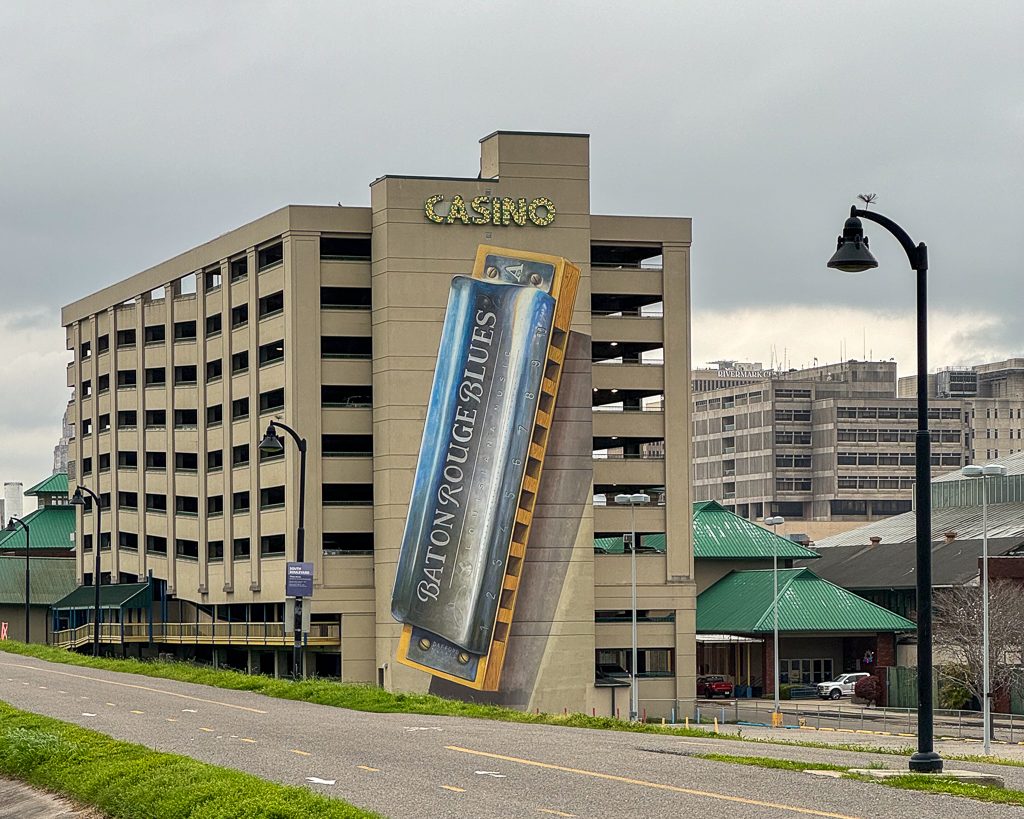
We walked along the Levee Bike Path, passing the “Sing the River” sculpture. When it was first installed, the sculpture played music which varied with the river level; our guide said that it got burnt out during the first good thunderstorm and they’re still trying to figure out a way to repair it and keep it working. It’s still pretty, though!
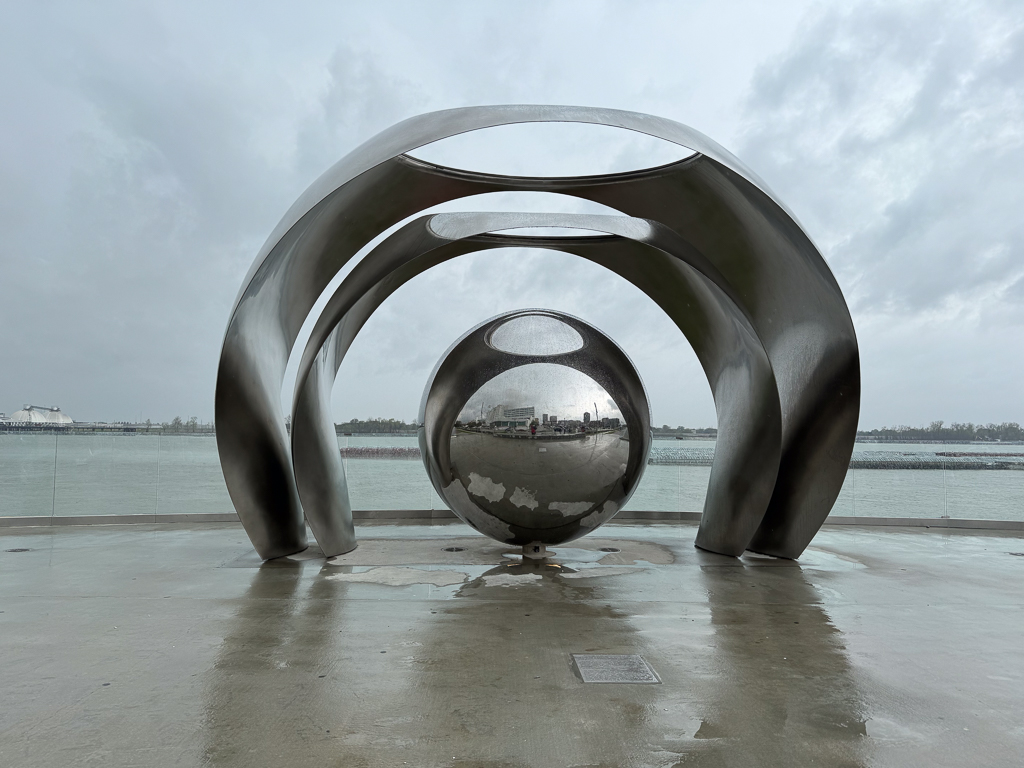
We left the Levee Bike Path at its northern terminus and walked over to the main shopping district on 3rd Avenue, where we saw the city’s historic Coke sign – the building it was on had been a pharmacy for years, and when it closed, the sign went dark. Various groups worked together to get it relit – now that’s powerful advertising!
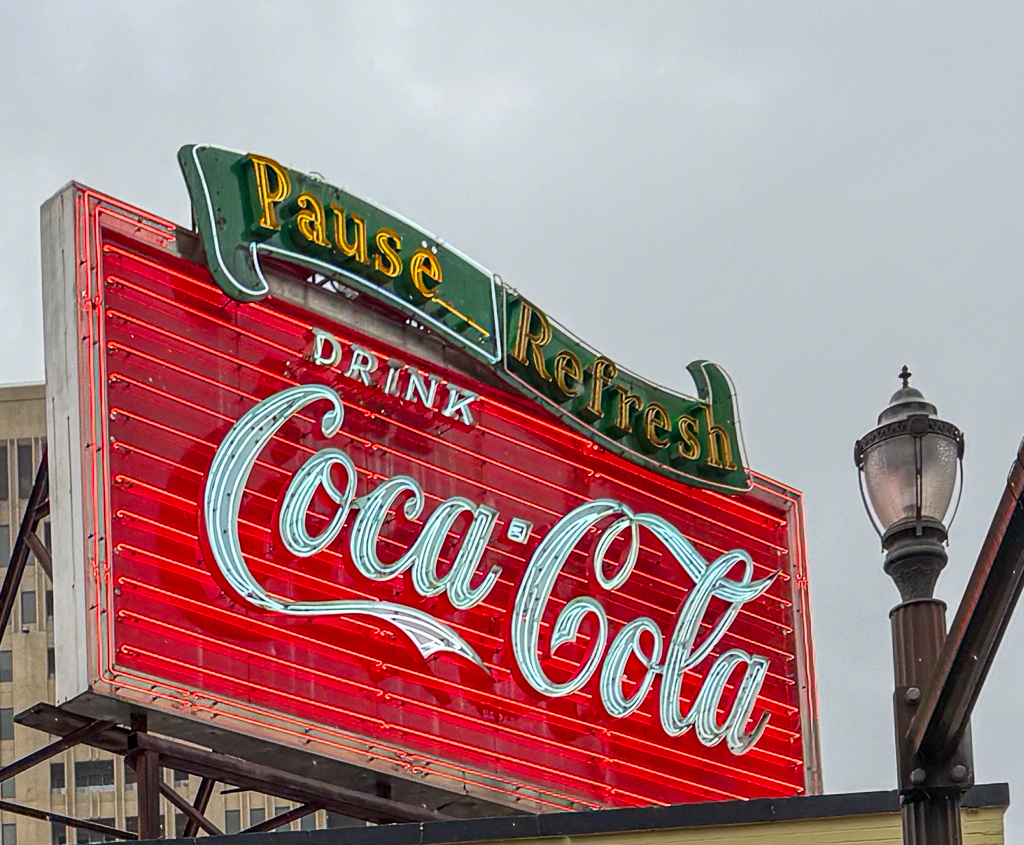
It had started raining by this time, but it was fairly gentle if you ignored the lightning and thunder in the distance. We made a brief stop at Matherne’s Market…and half of our group vanished.
The survivors continued onward to the New (1934) State Capitol. Huey Long had it built when he was Governor; he was assassinated there; and he’s now buried on the Capitol grounds under the big white pillar you can see on the right of the photo (yes, that’s Huey Long atop the pillar).
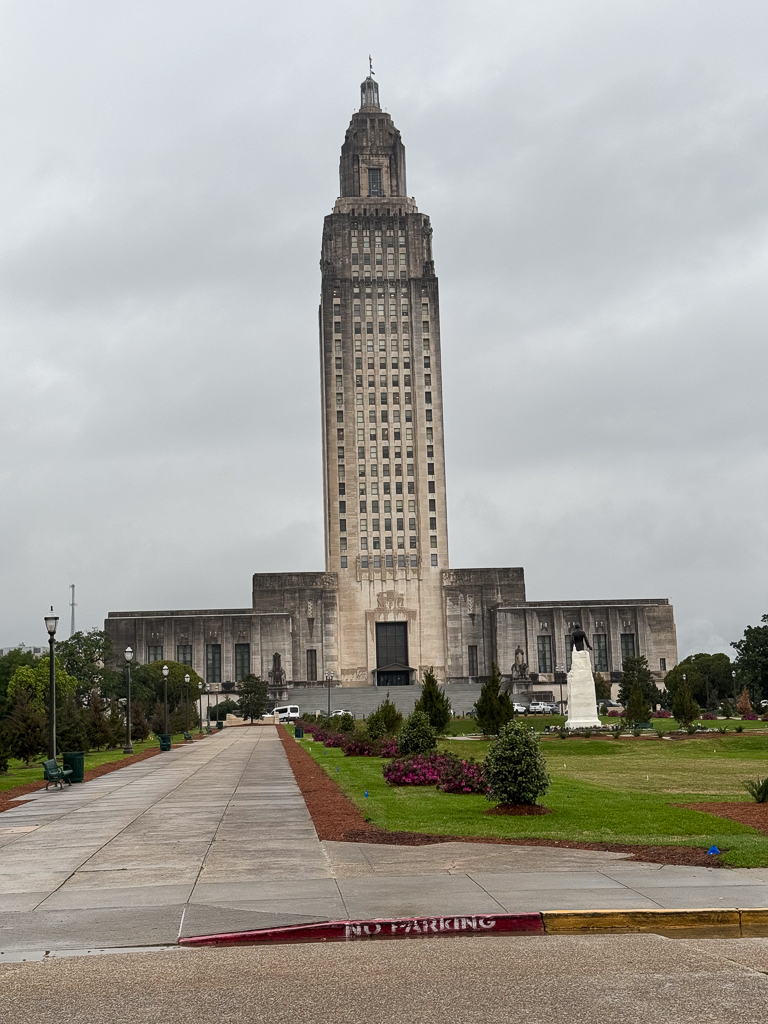
We left the Capitol grounds for Spanish Town; they take Mardi Gras very seriously there, and there are still LOTS of decorations weeks later.
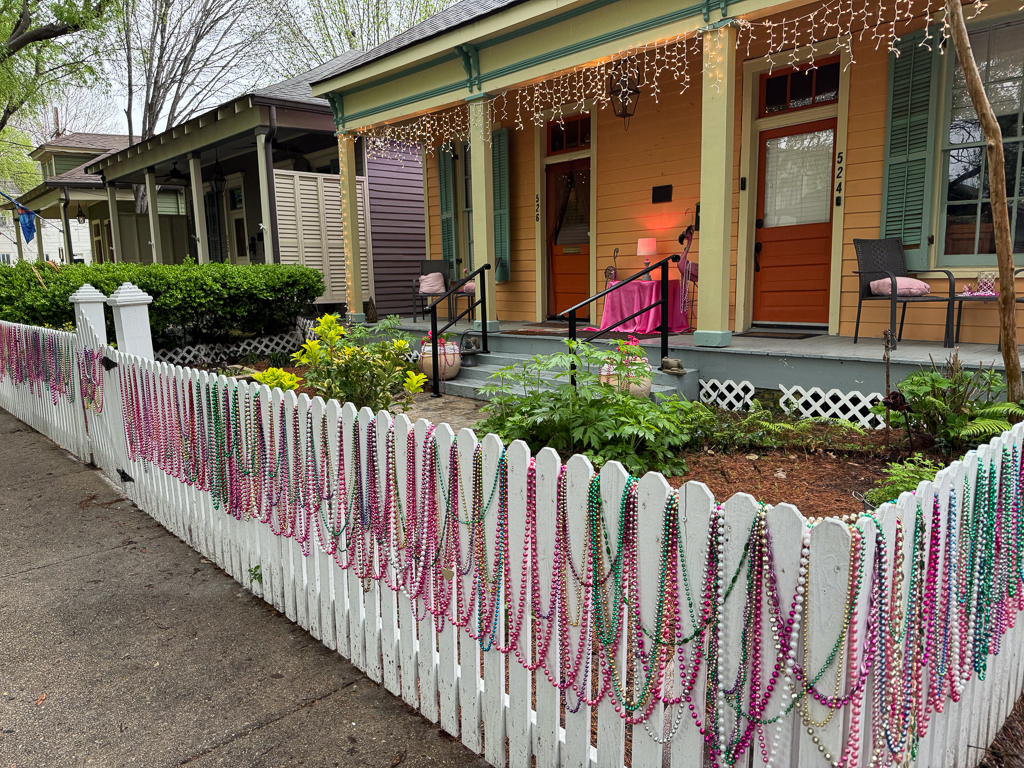
The rain was coming down harder and we picked up the pace; our next stop was the Old Governor’s Mansion, built by – you guessed it – Huey Long. He had the electrical and plumbing set up to mirror the White House so that he’d be comfortable when he became President!
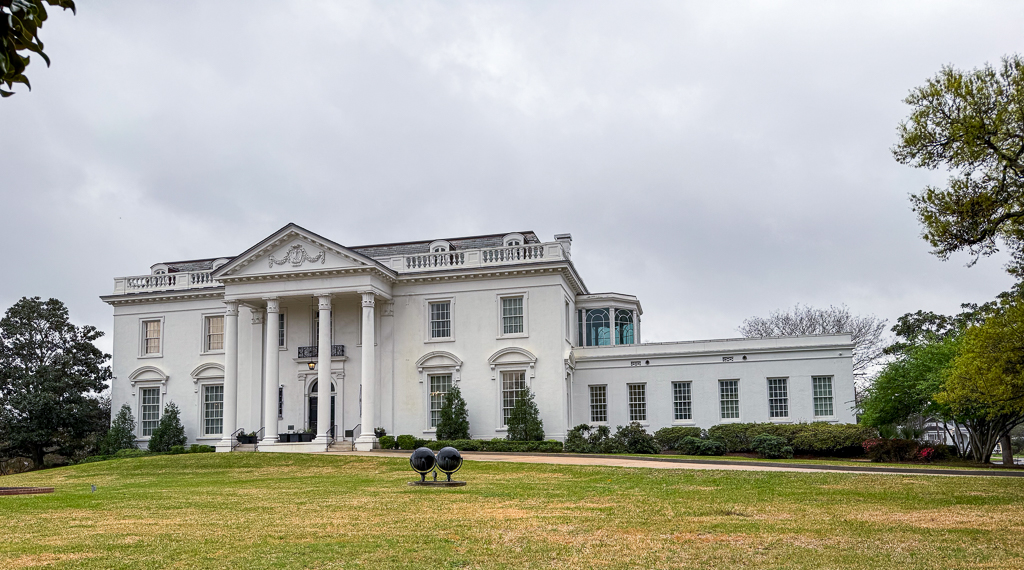
We made a brief stop by the Old State Capitol before climbing up on the levee to walk the last few blocks back to the ship.
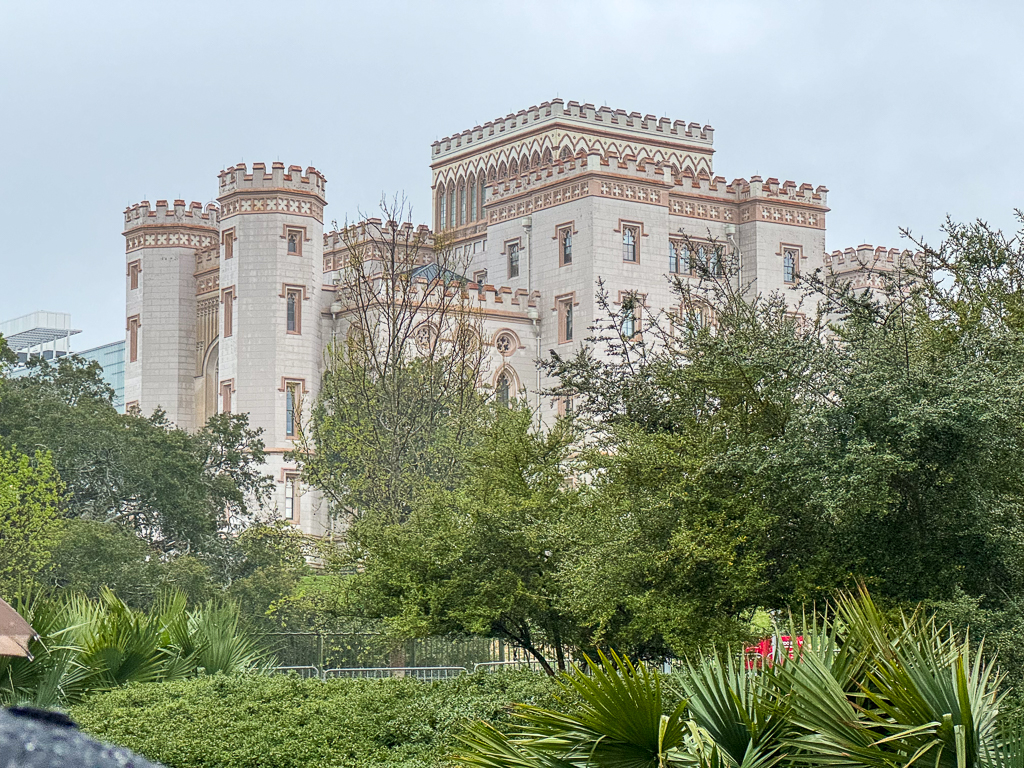
When we got back, our shoes, socks, and pants were thoroughly soaked; I’m glad I didn’t bring my big, non-water-resistant camera on the walk!
After we dried out, we went to a great lecture on “Early Blues on Record” by Andy Flory from Carleton College. After dinner, we enjoyed an hour of Cajun and Zydeco music from Waylon Thibodeaux.
We sail away from Baton Rouge about 1am; I don’t plan to be awake to say goodbye.
